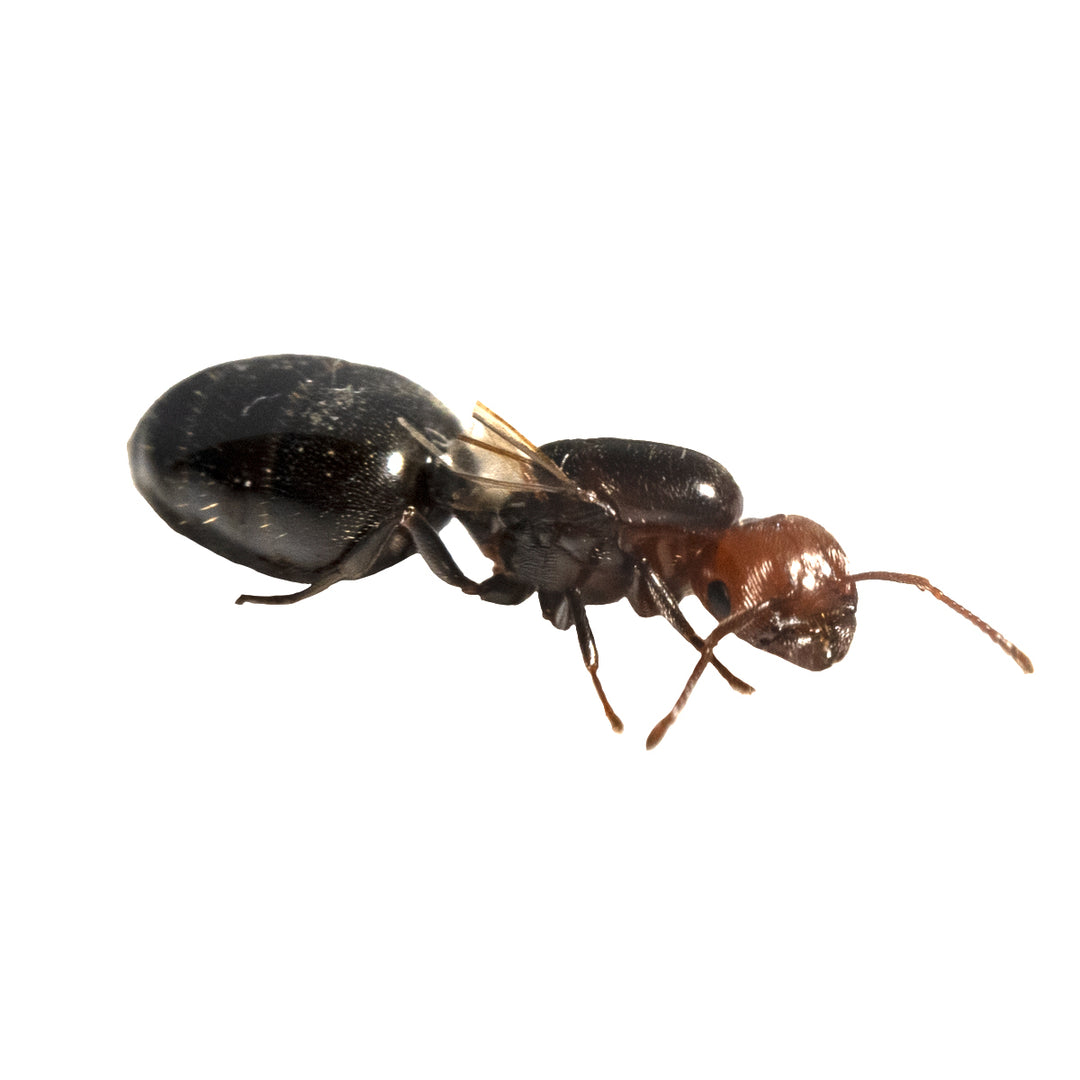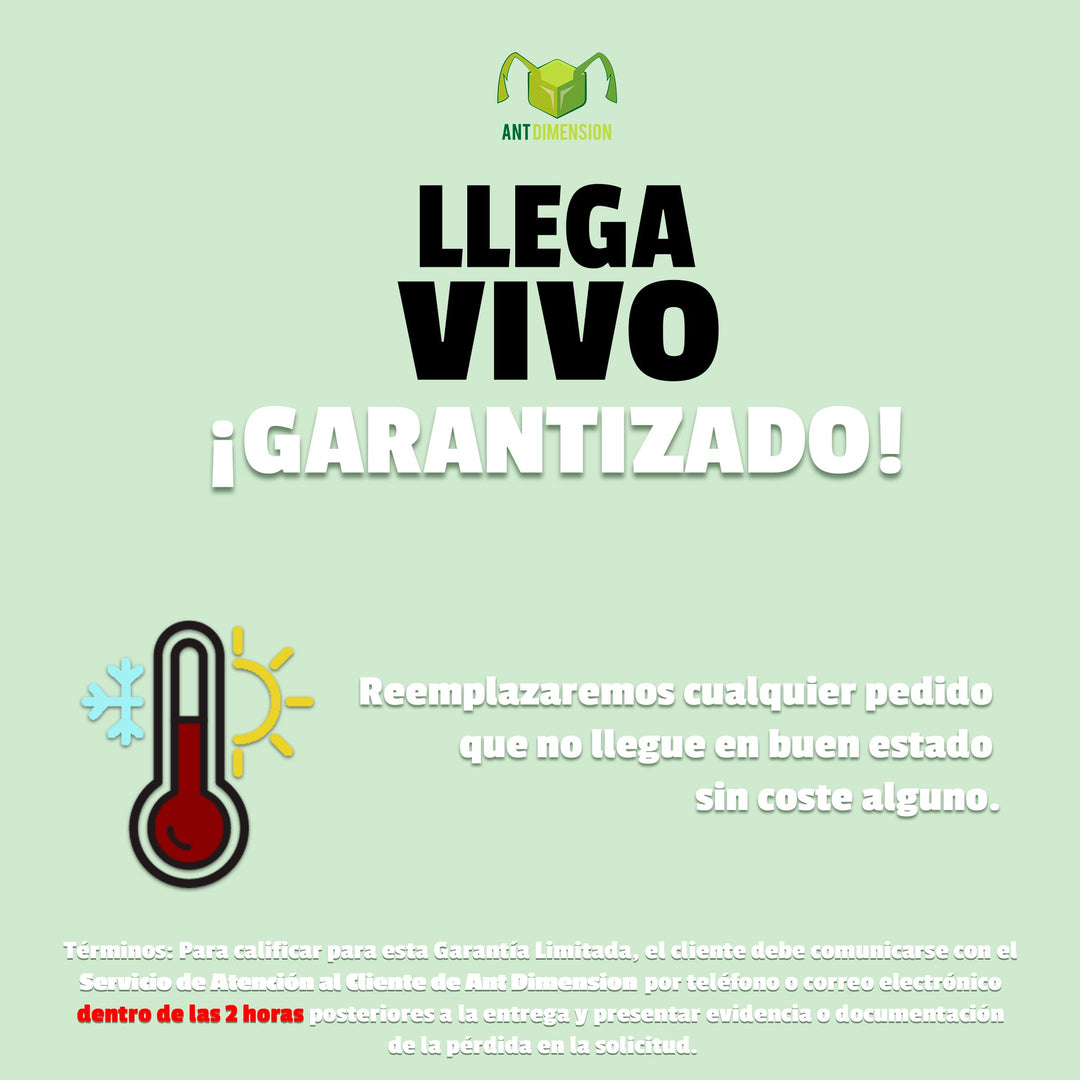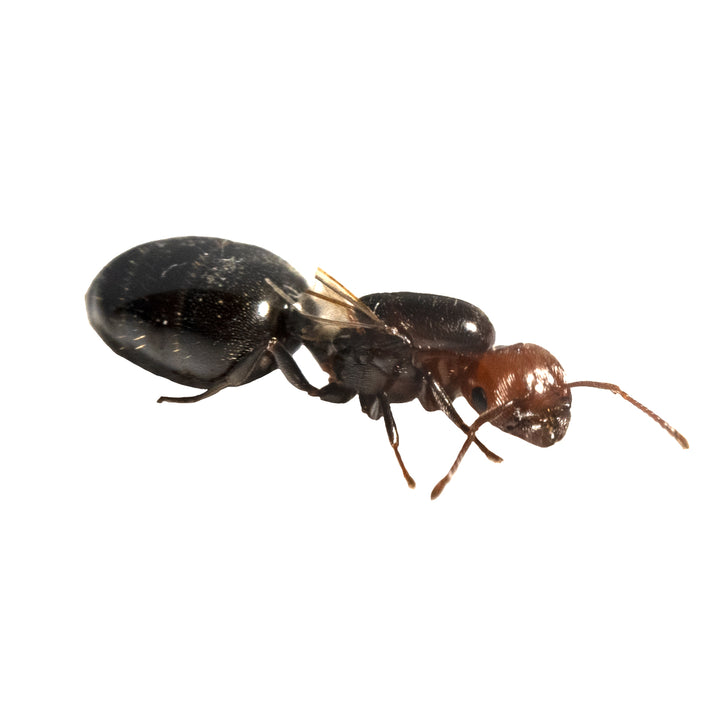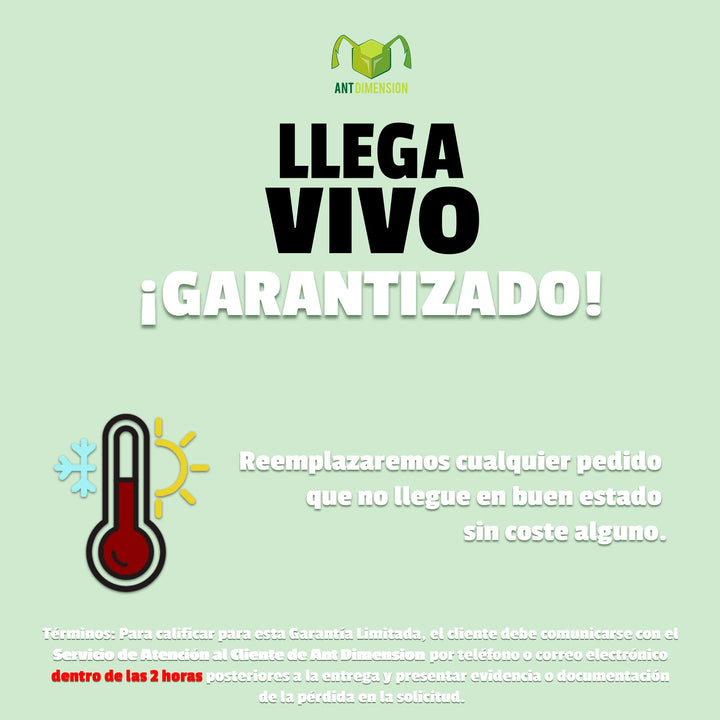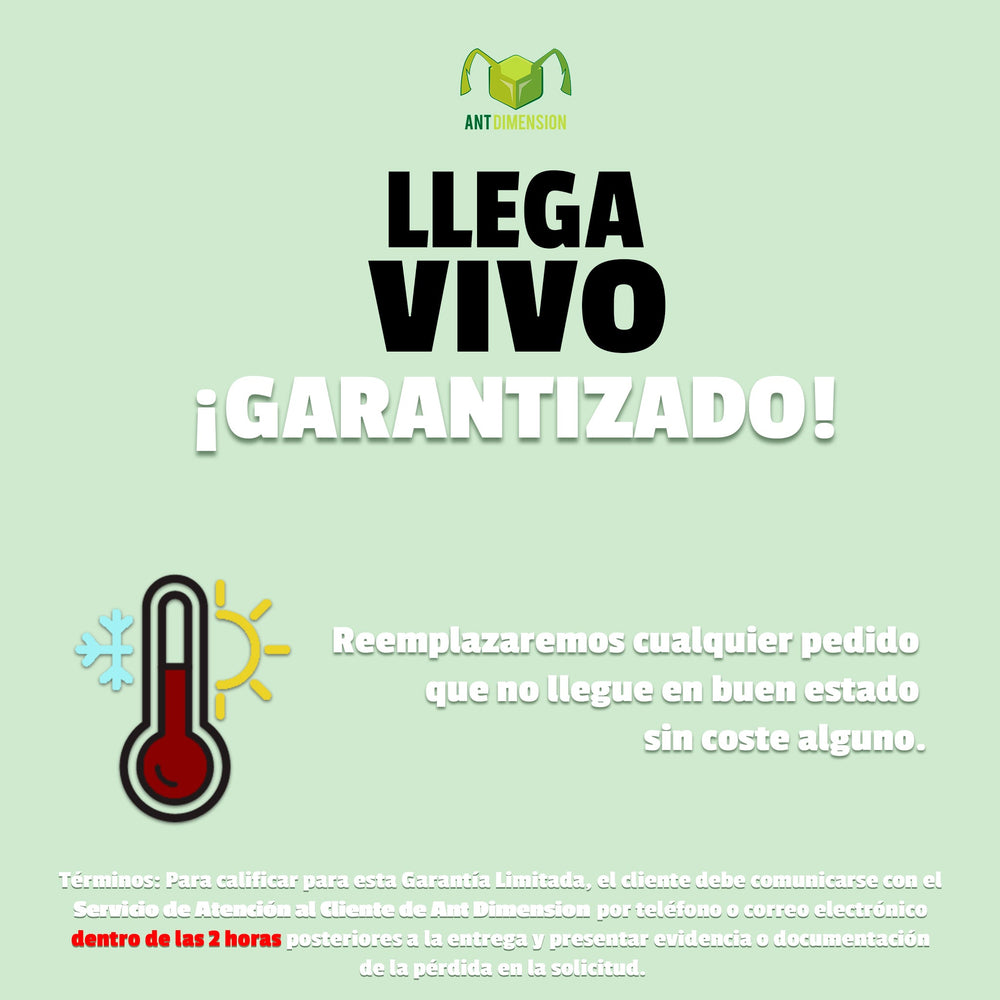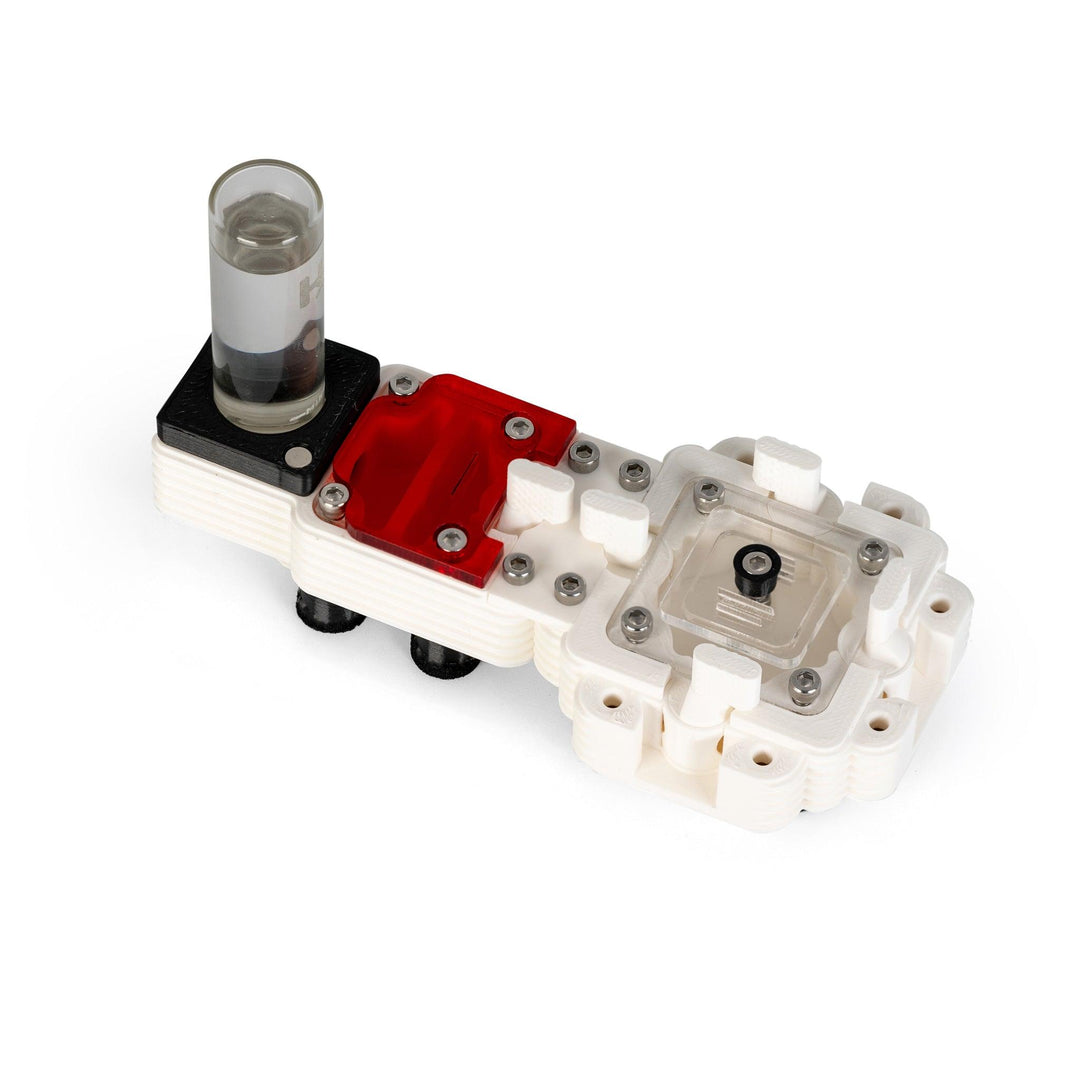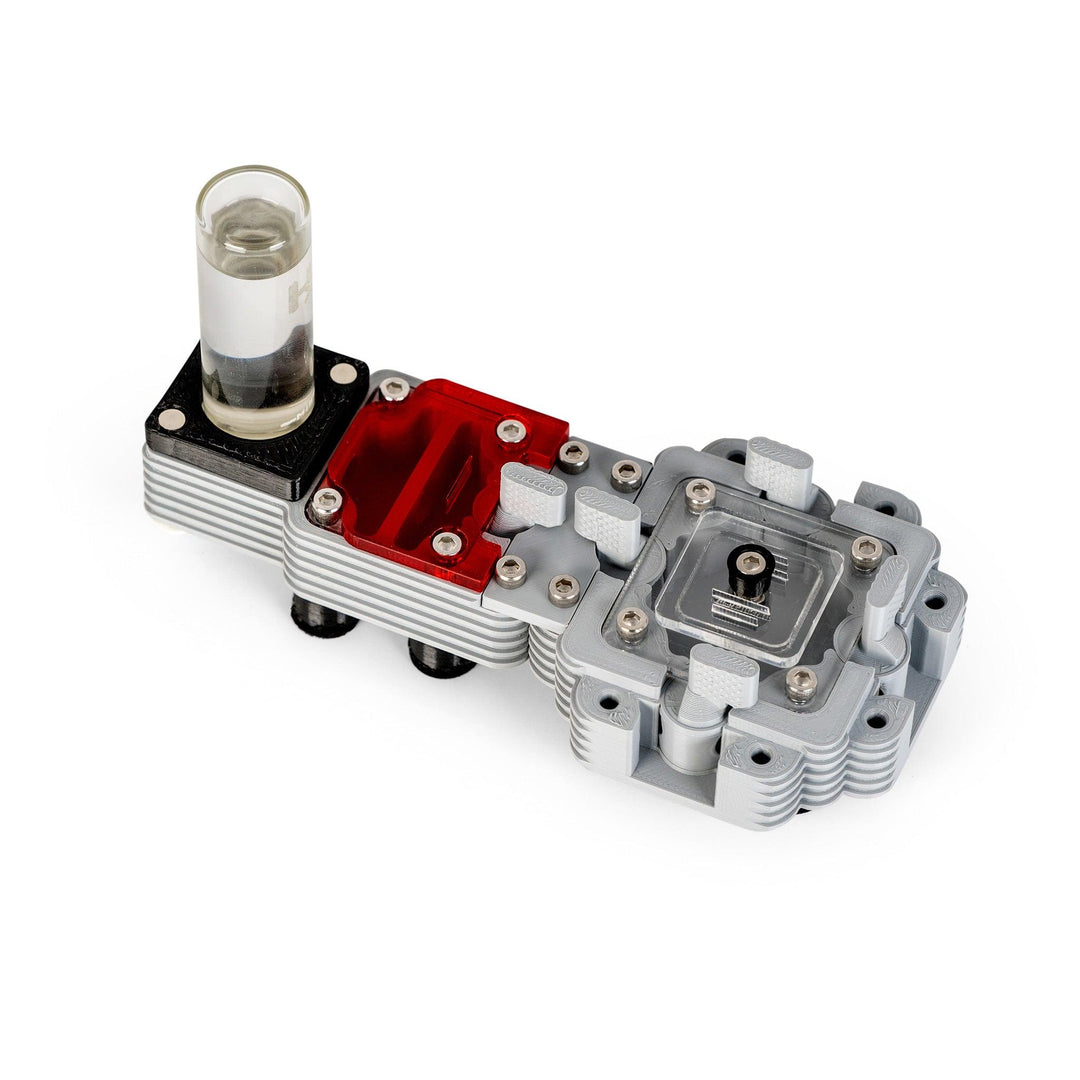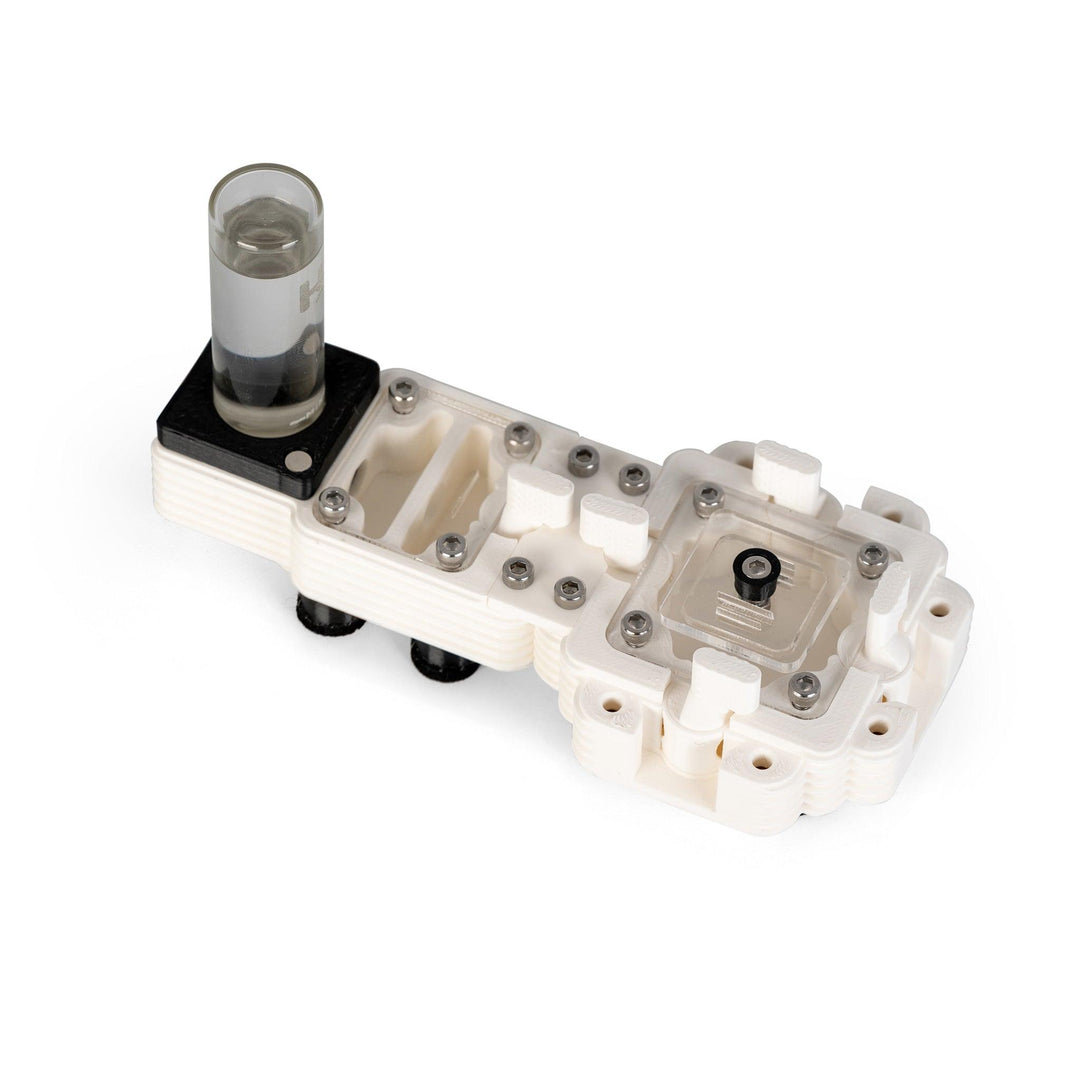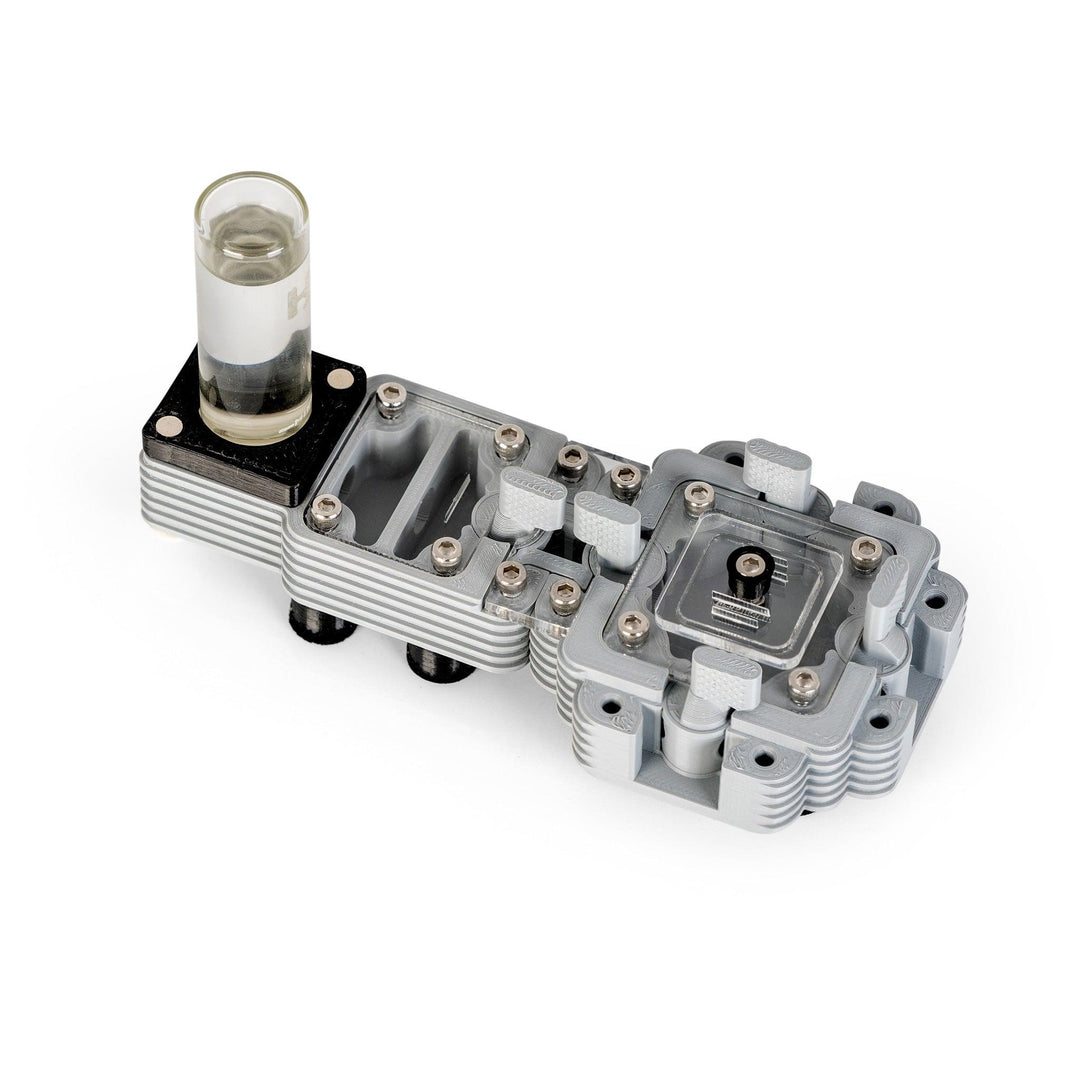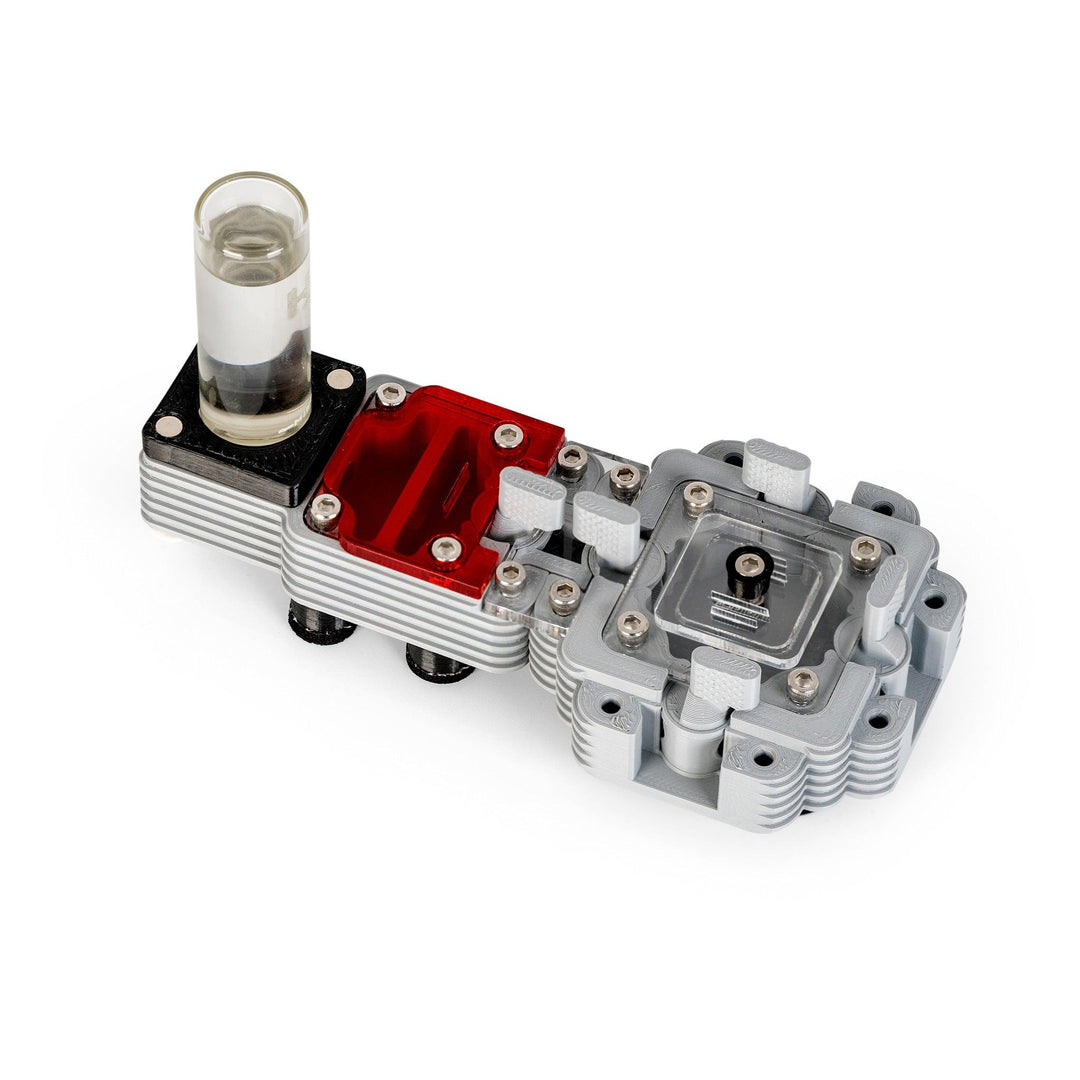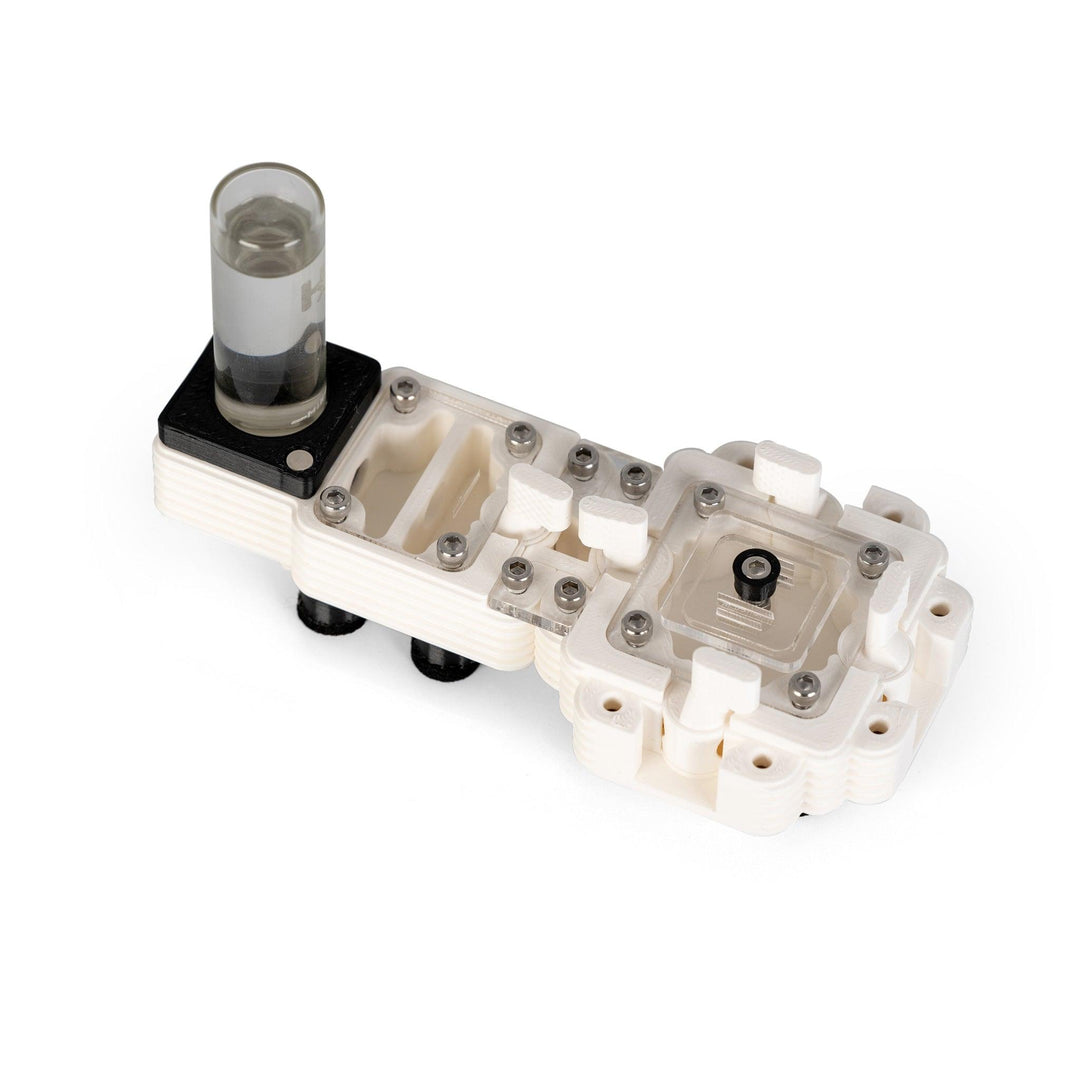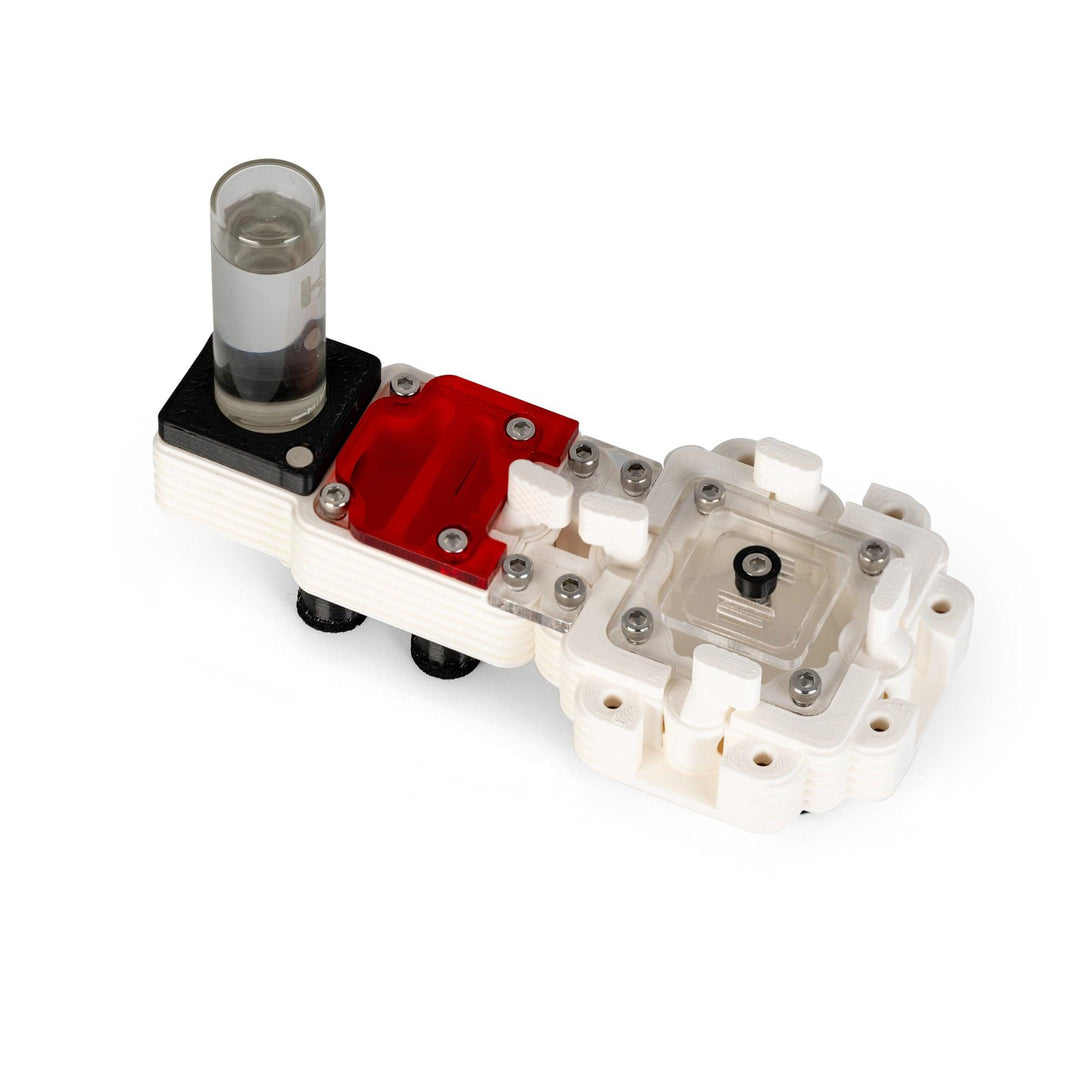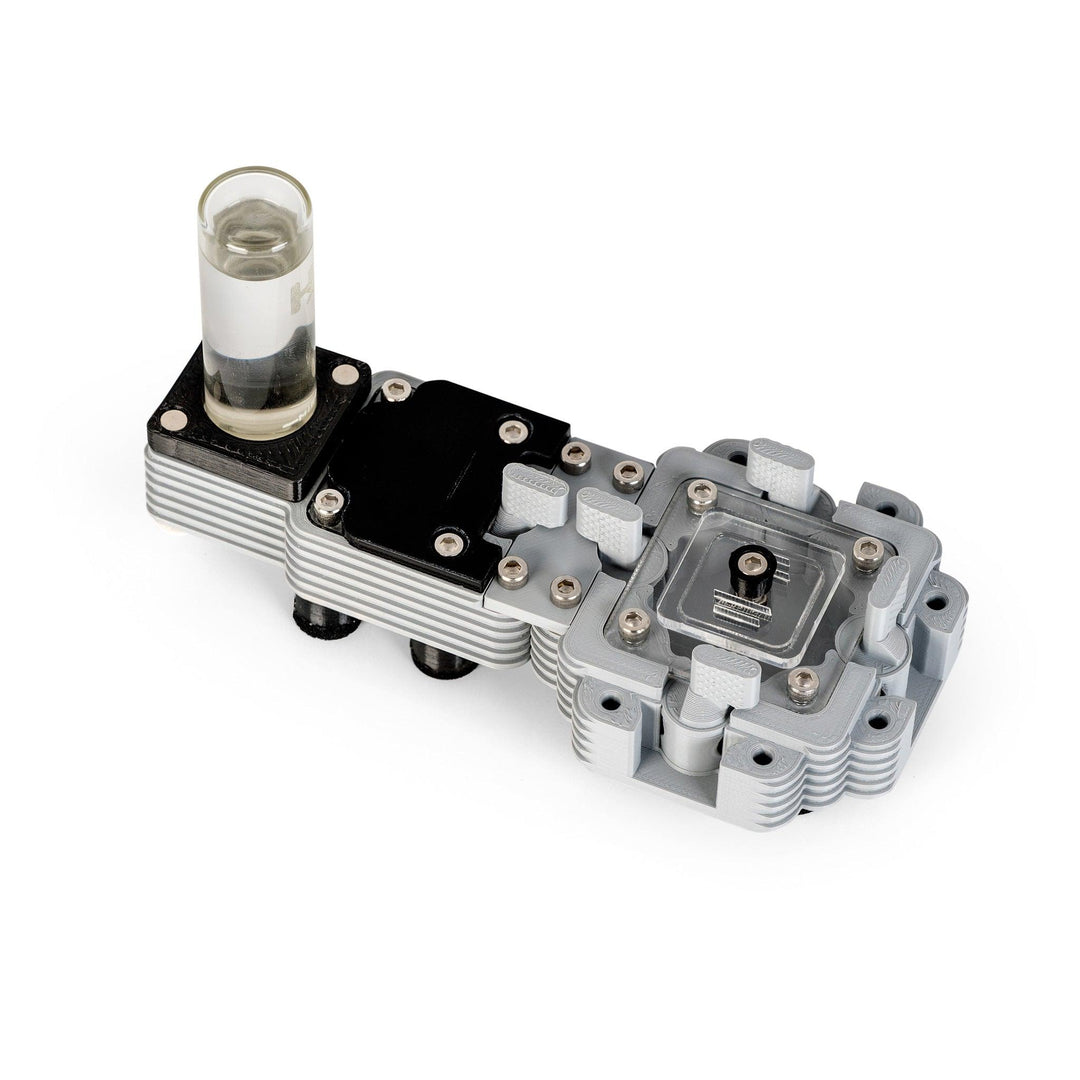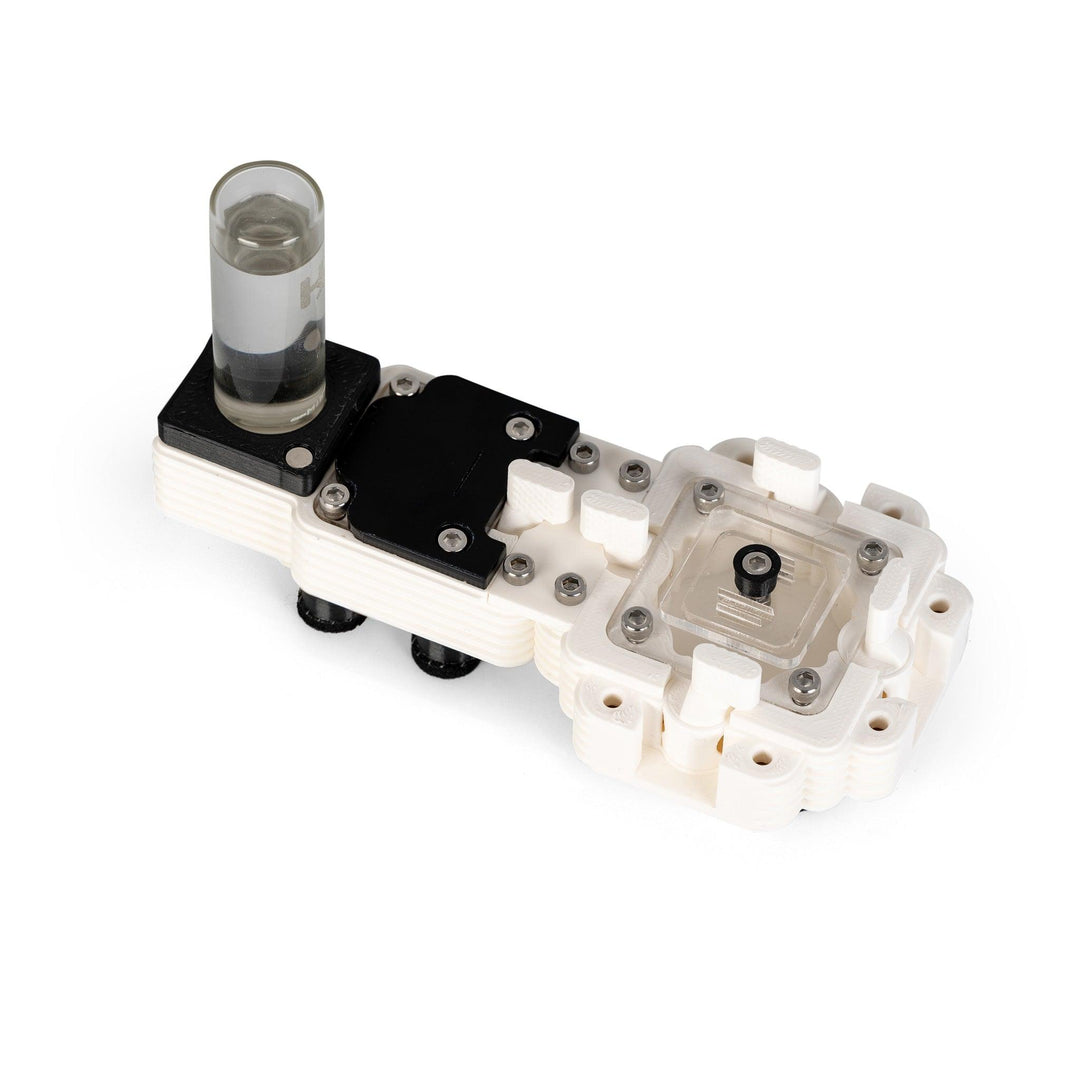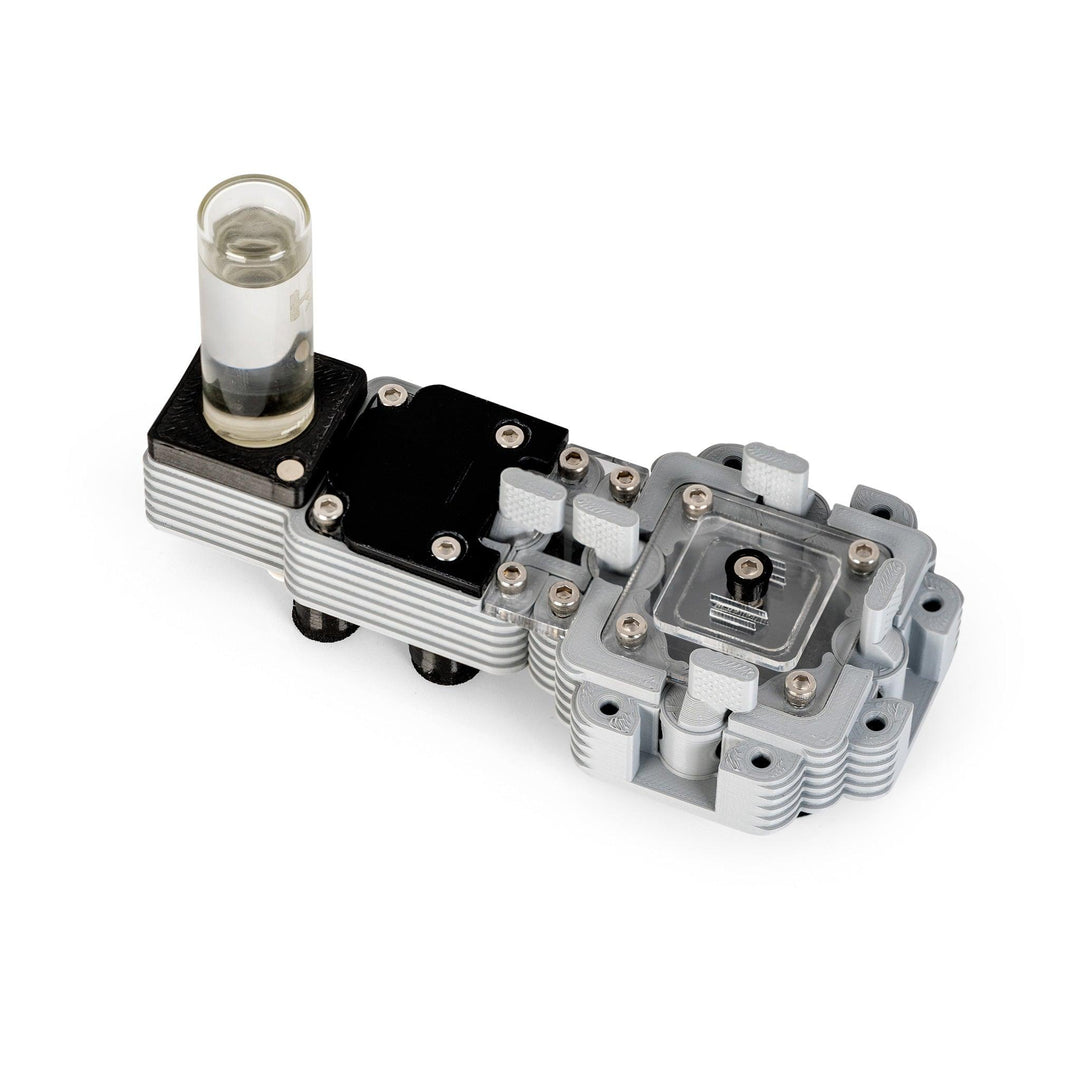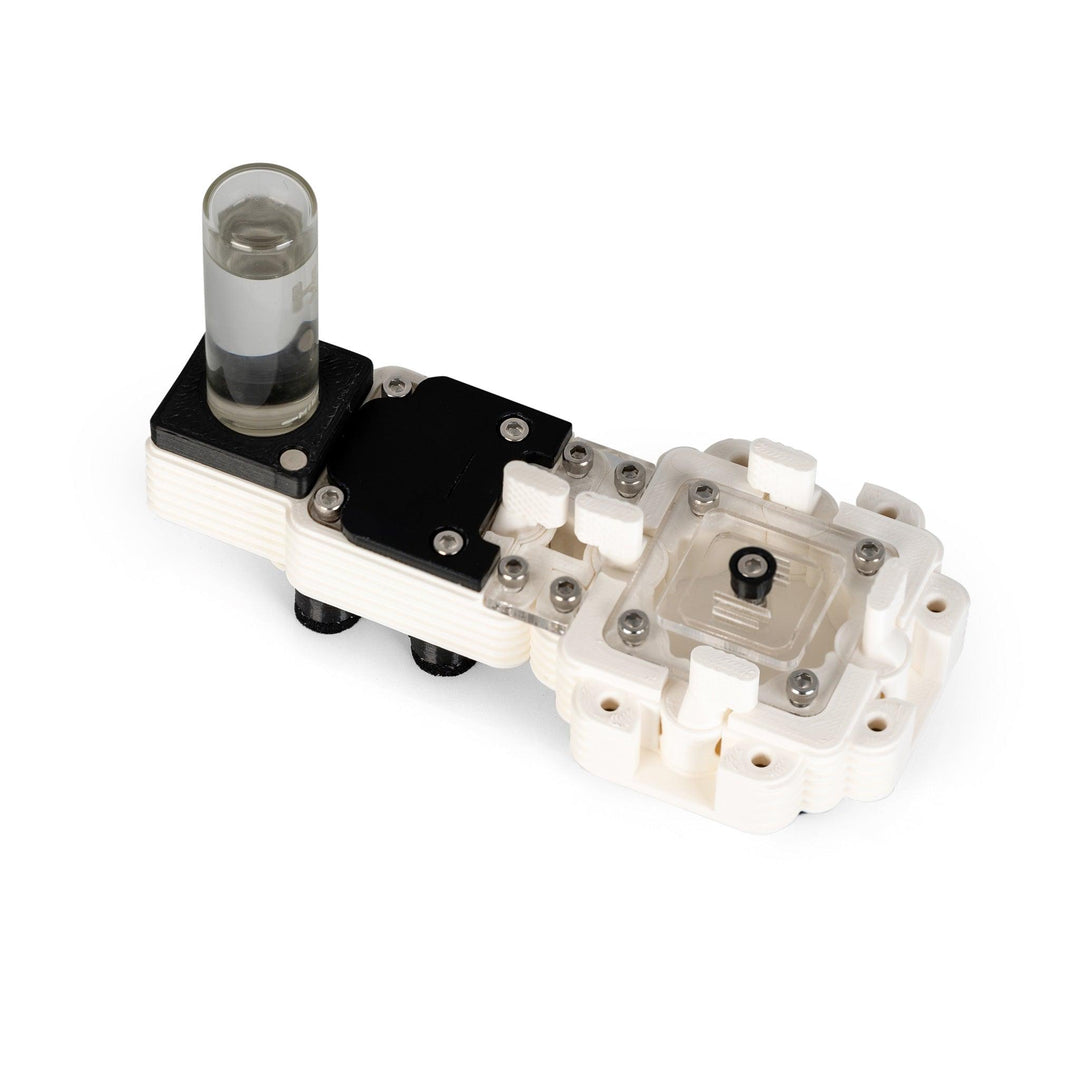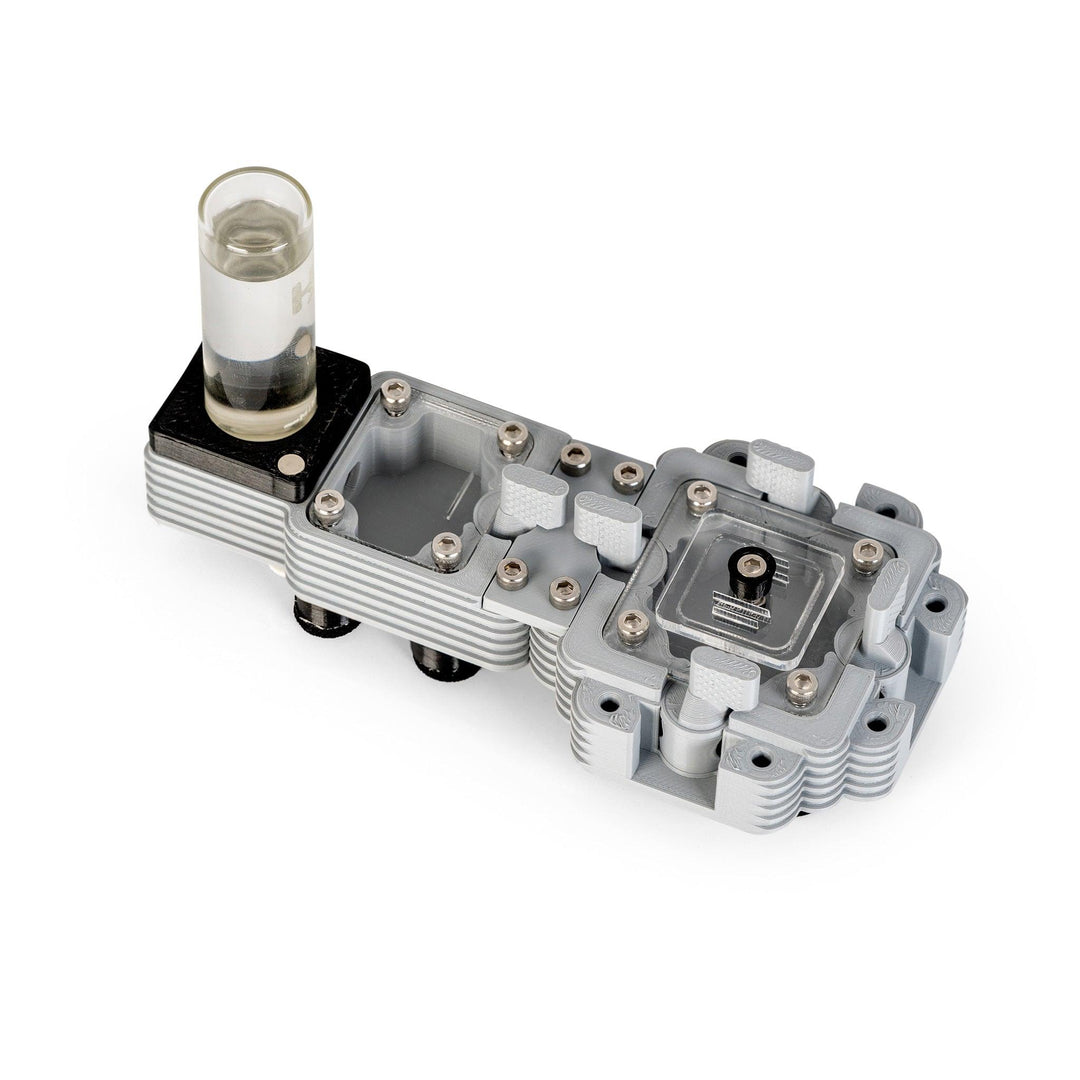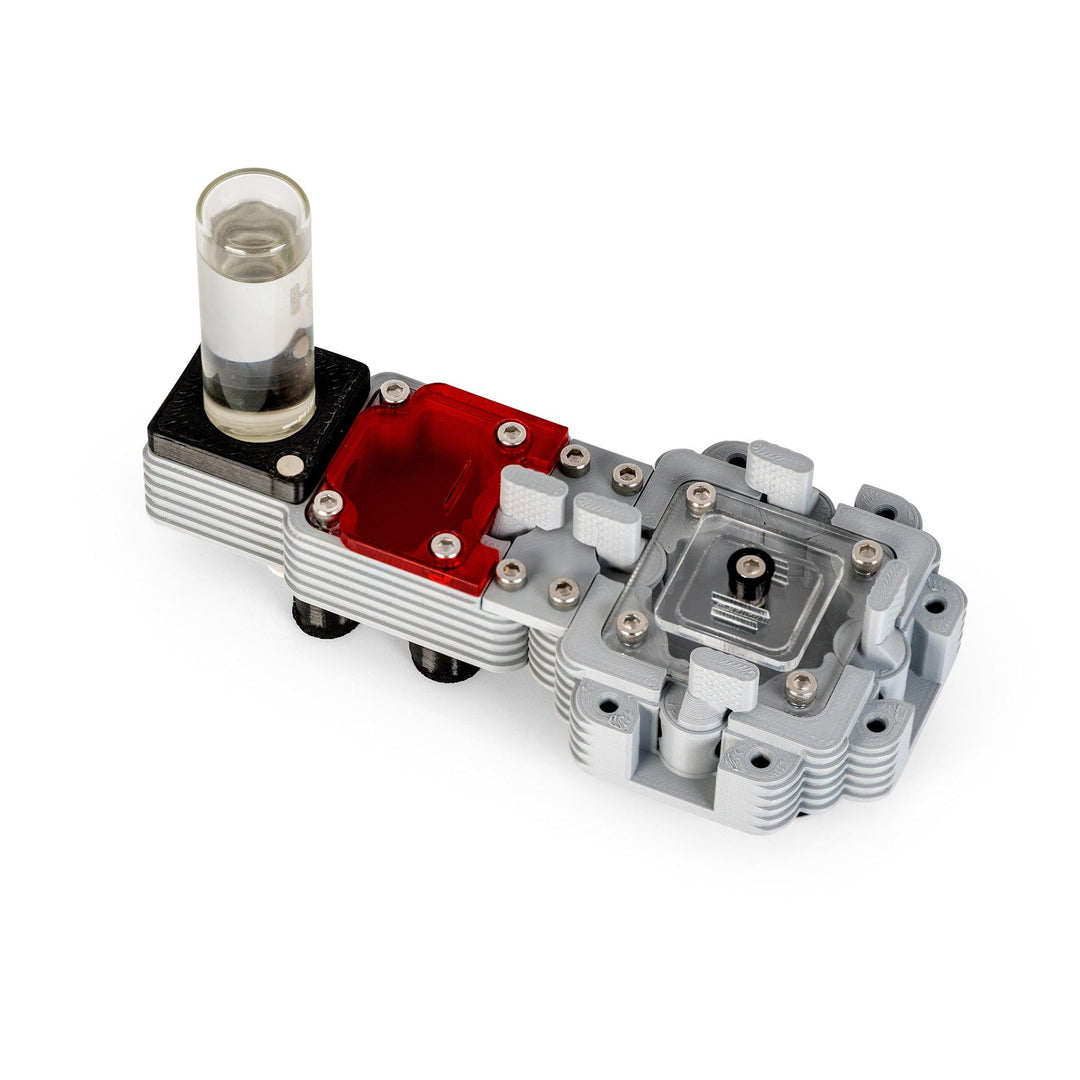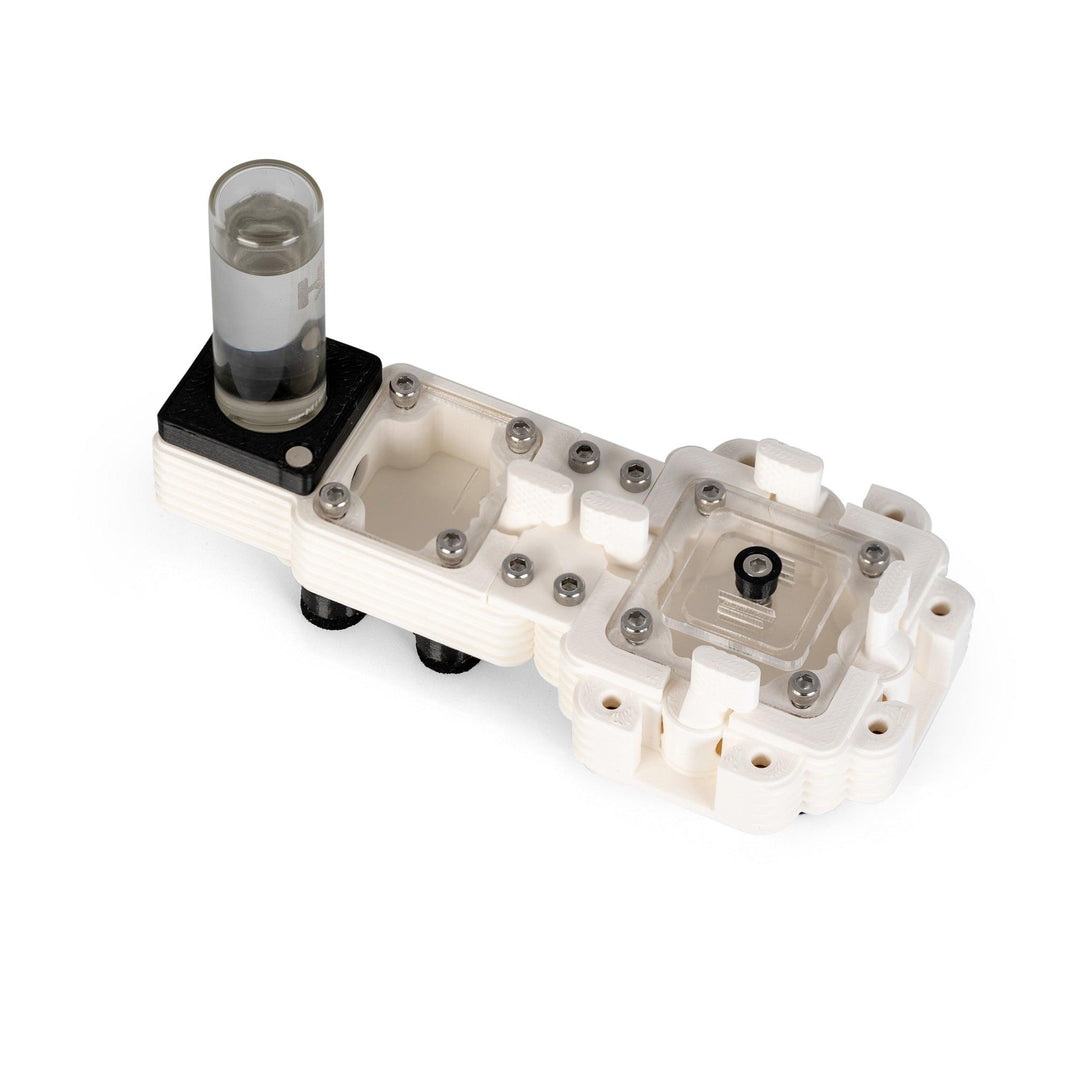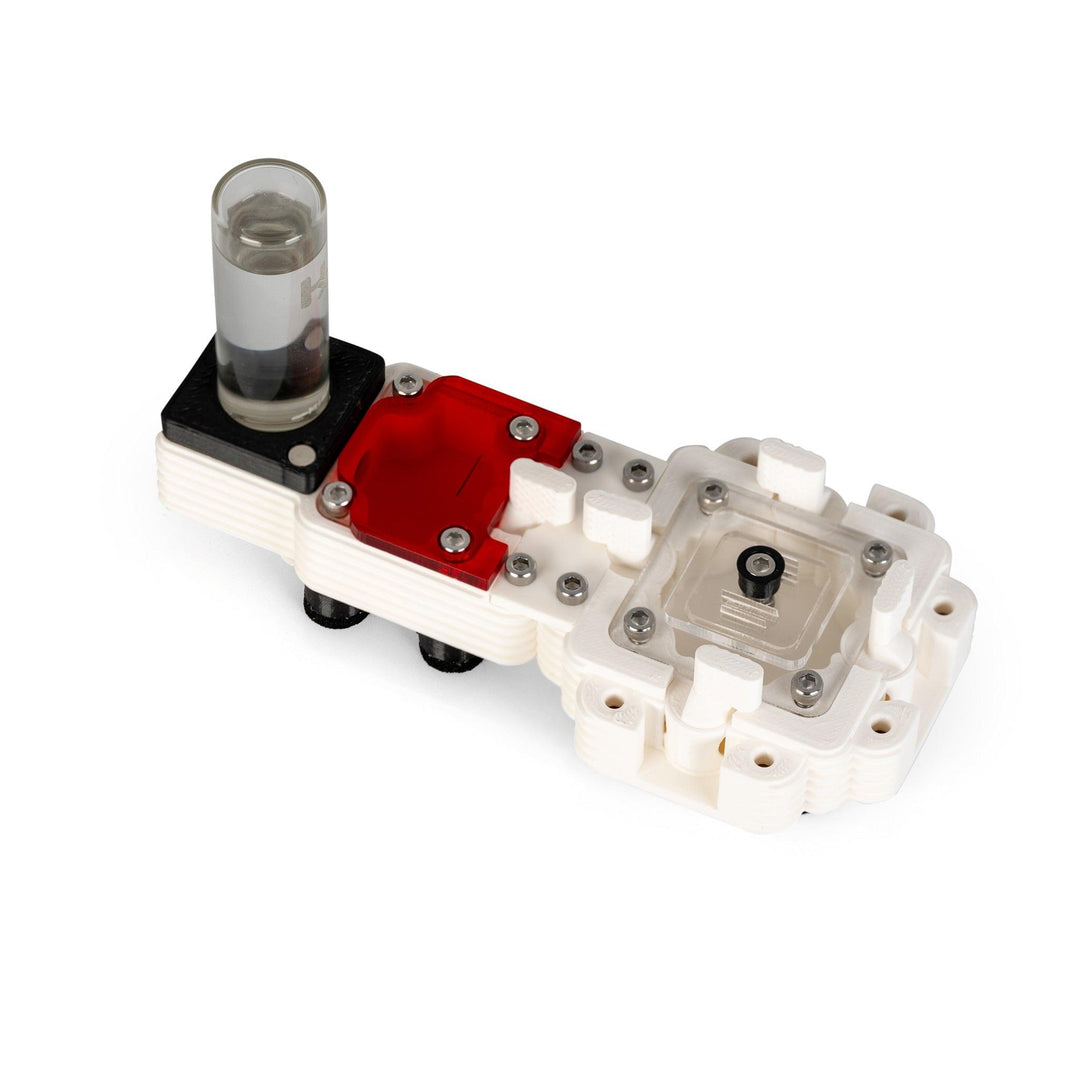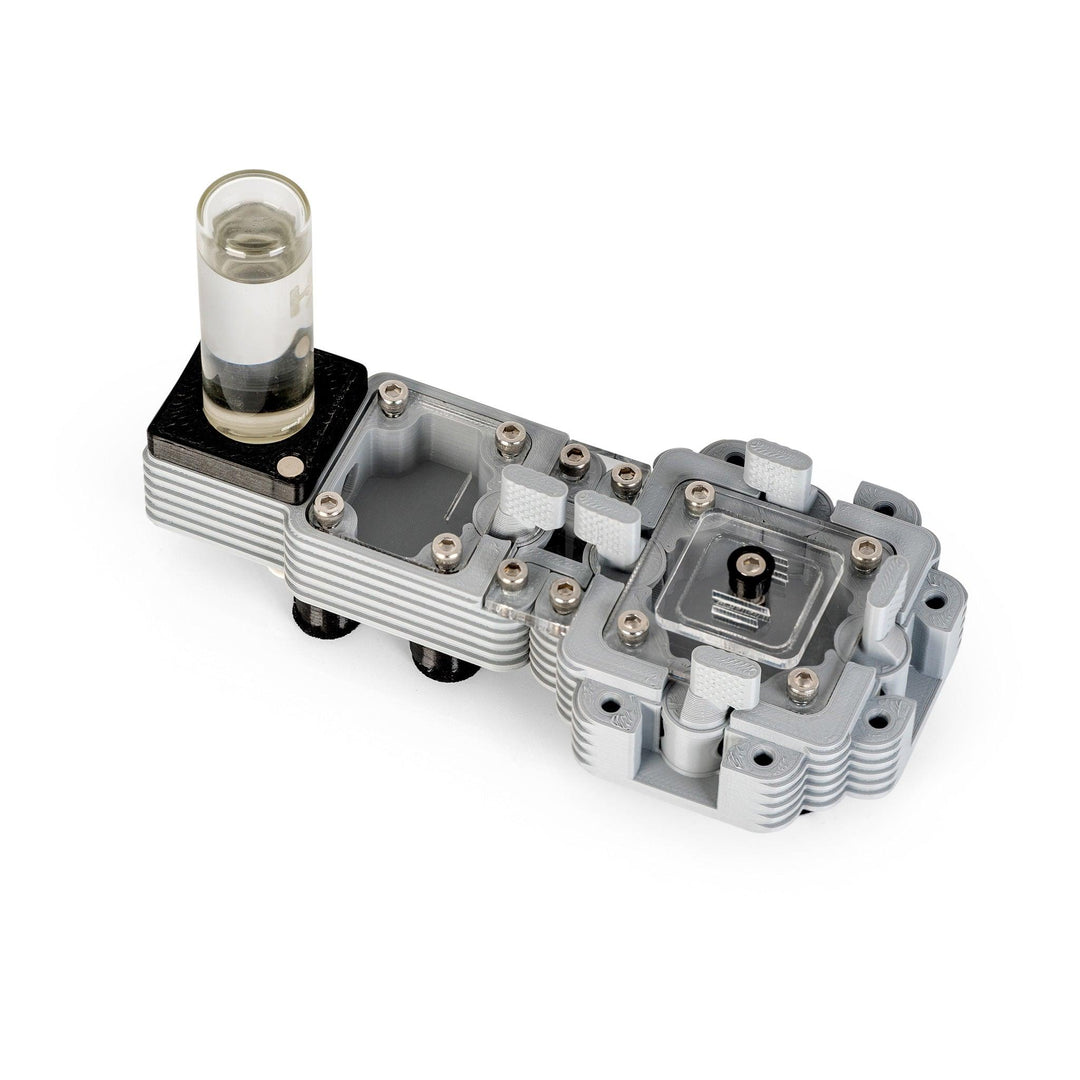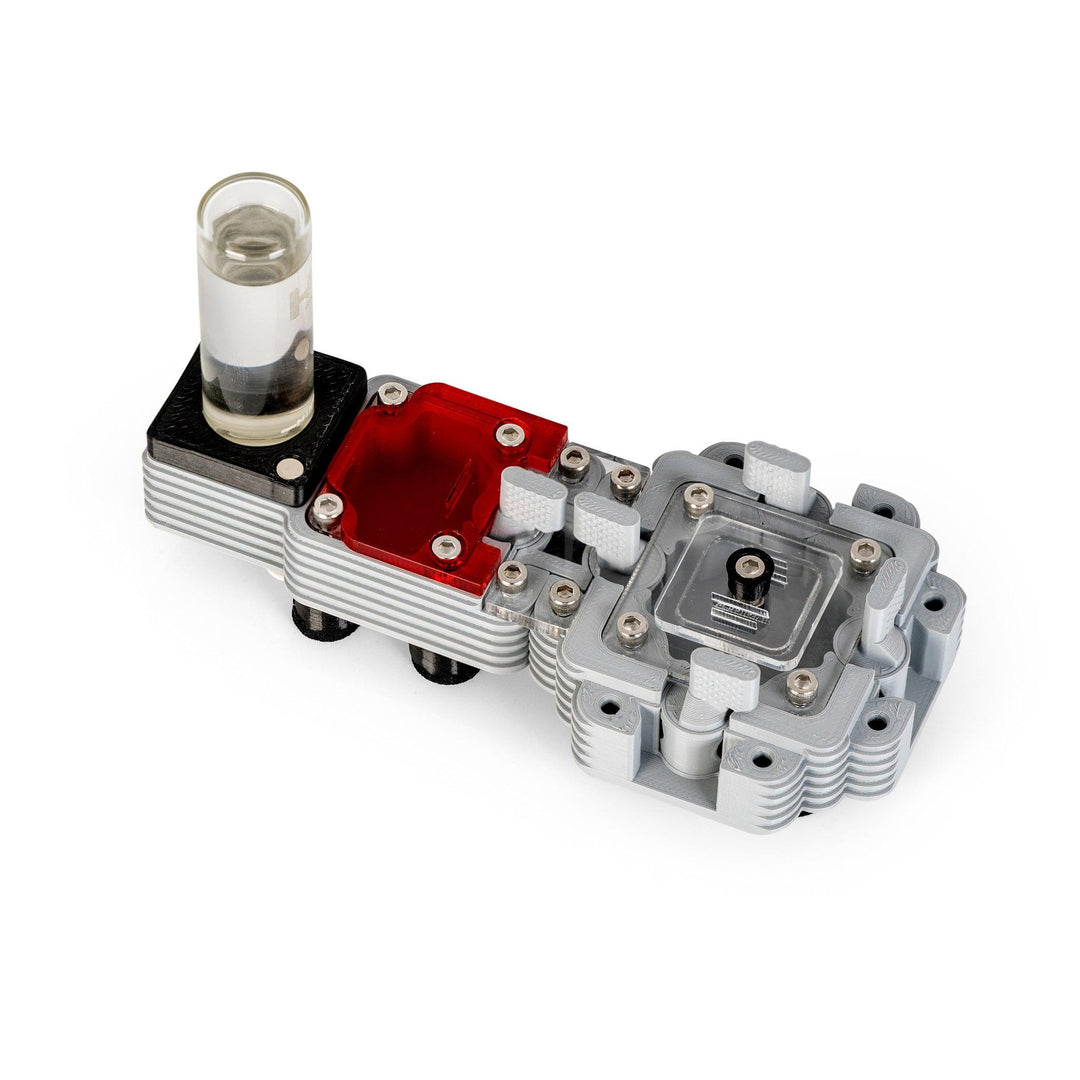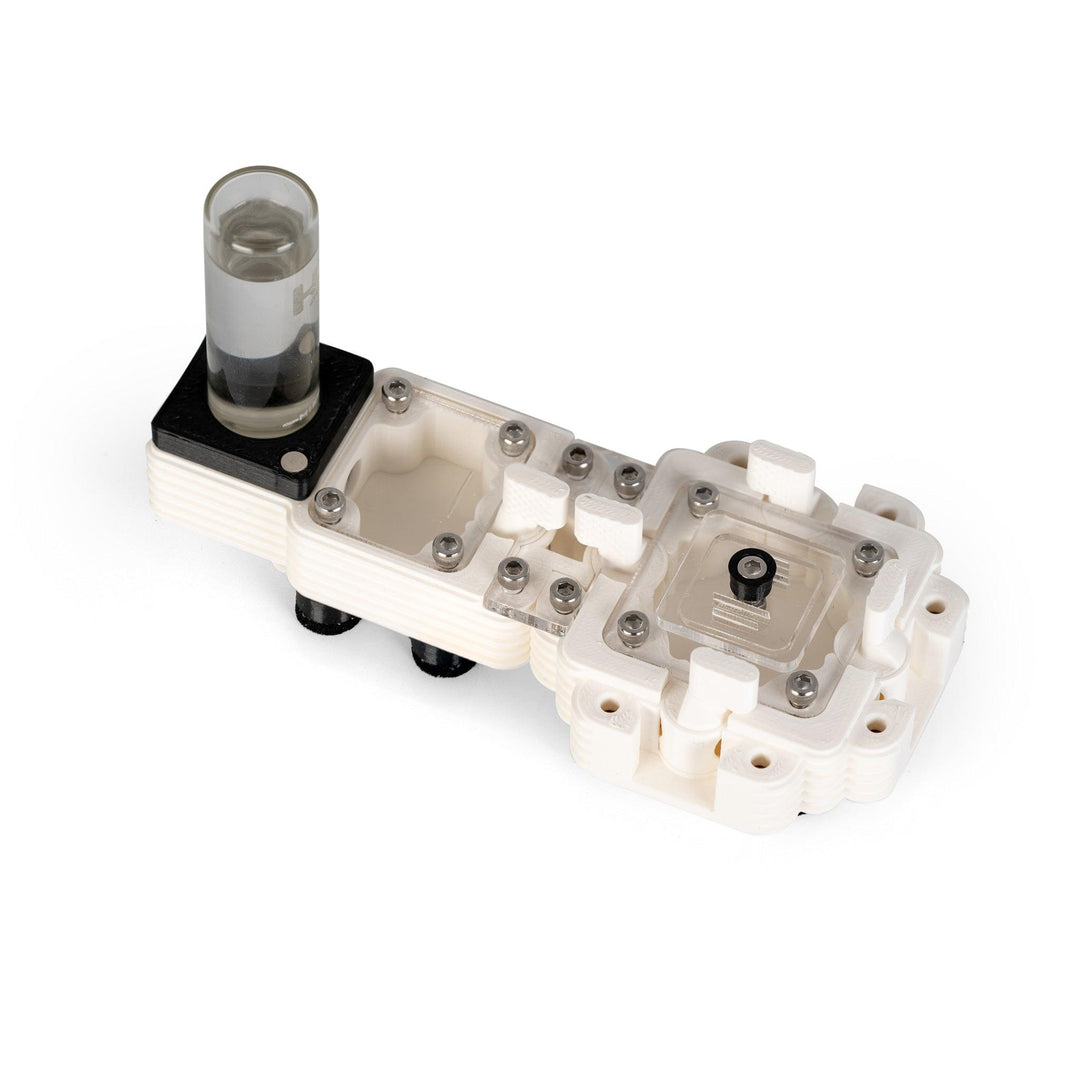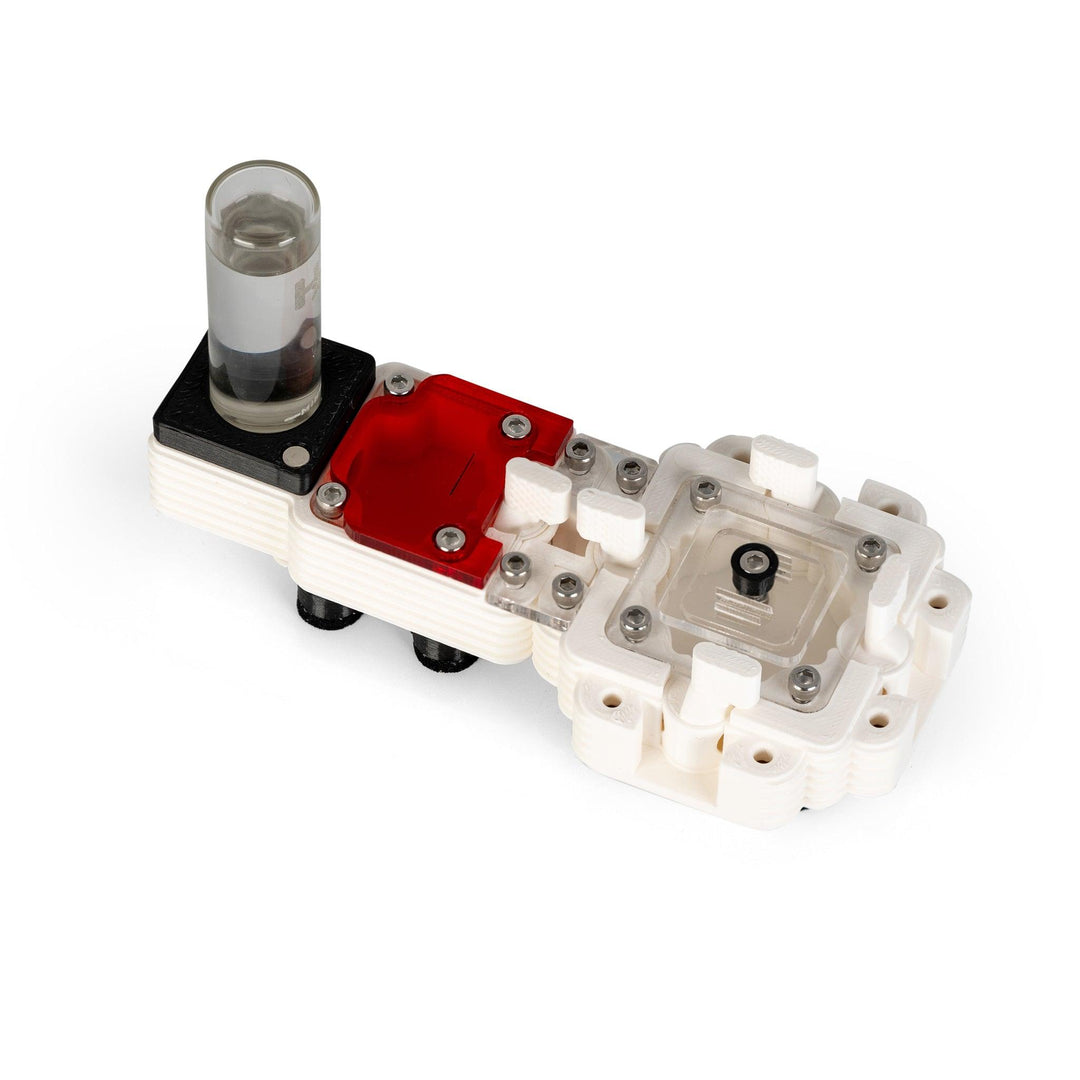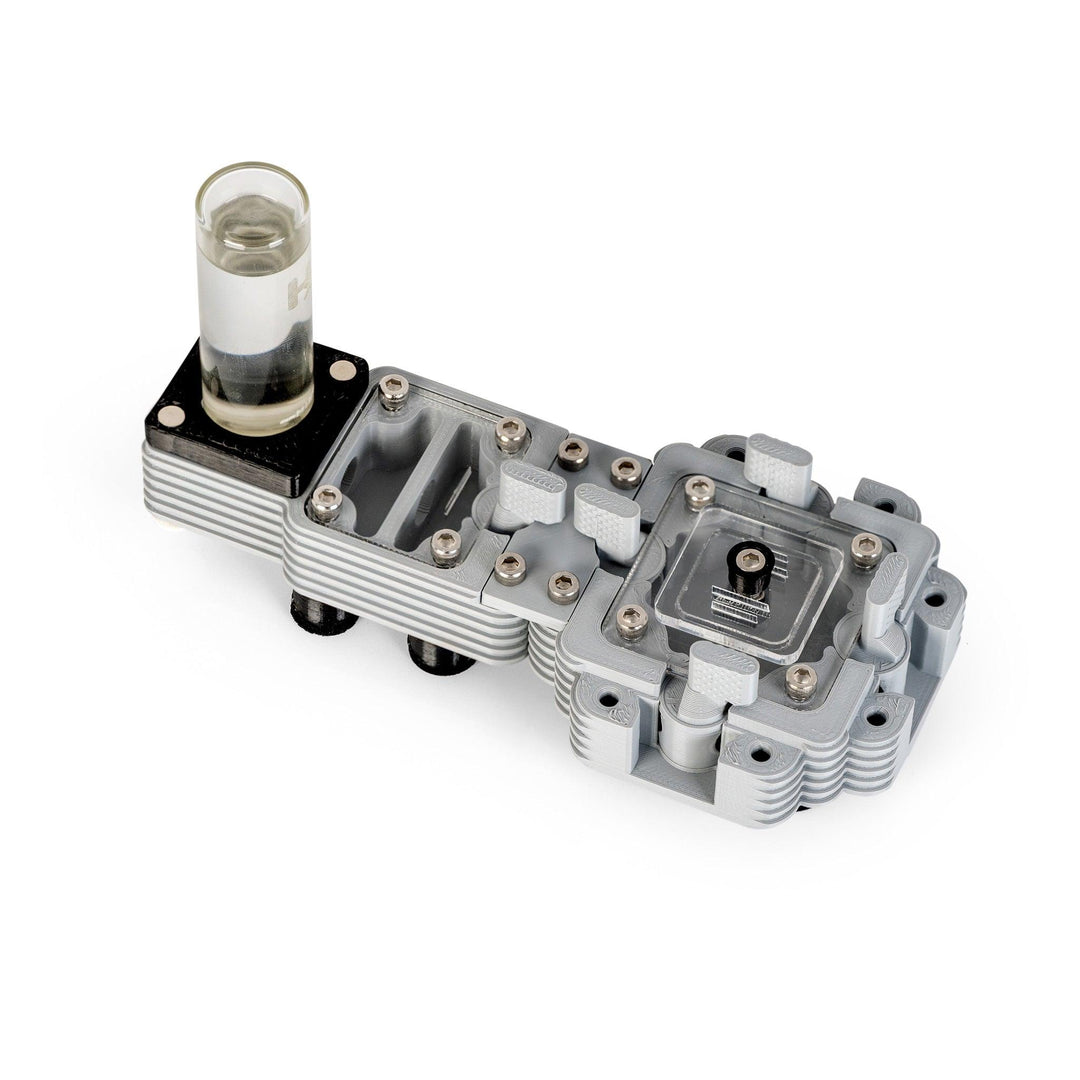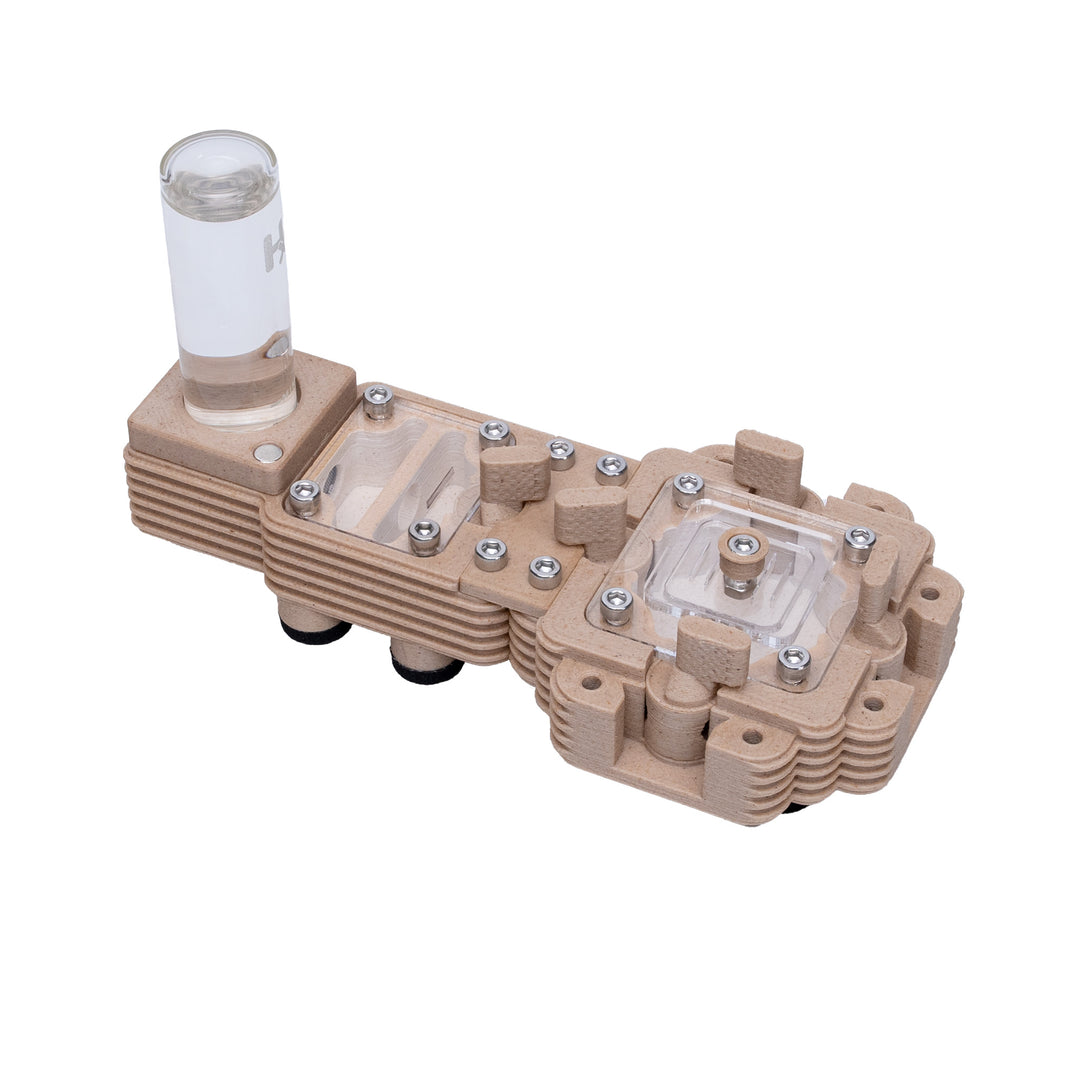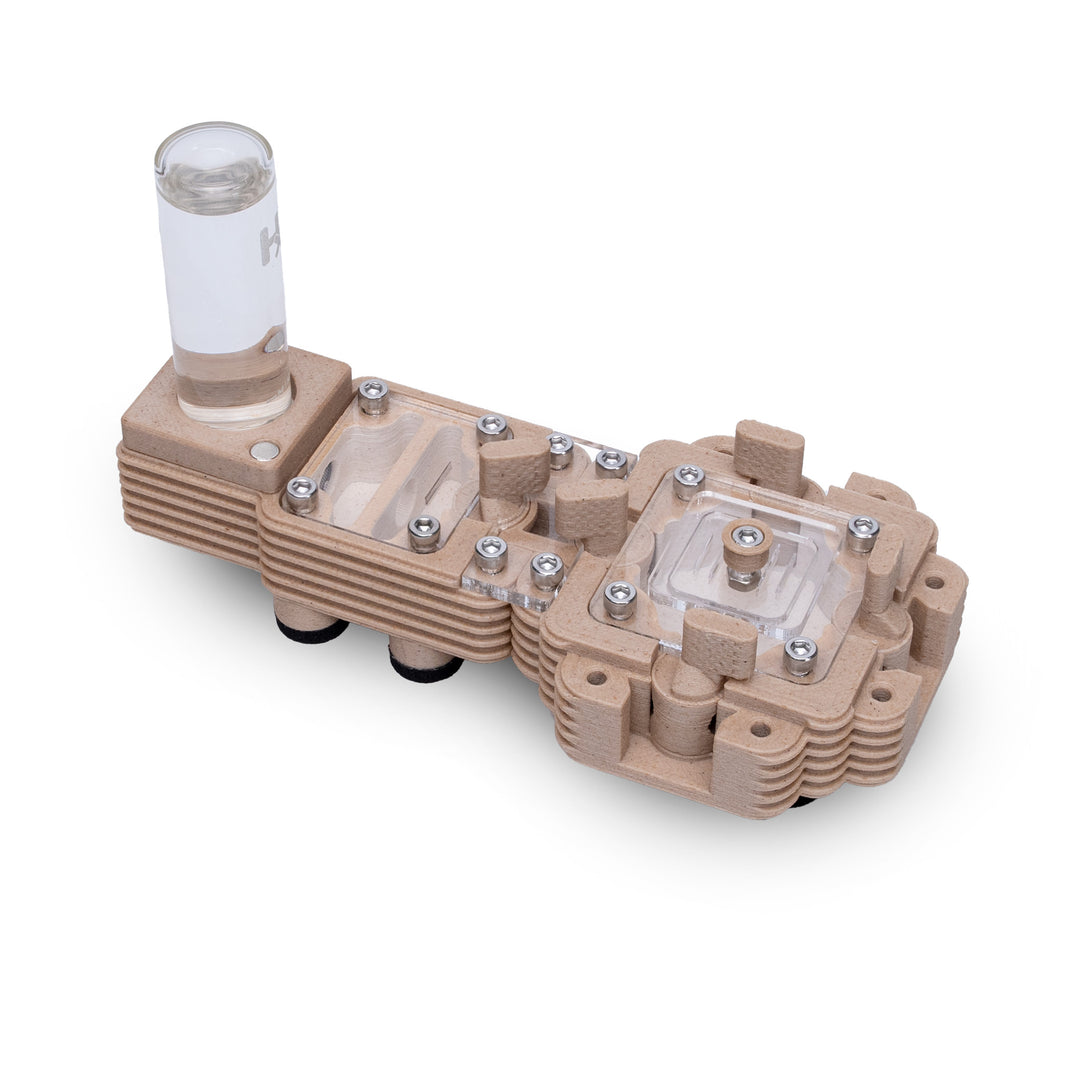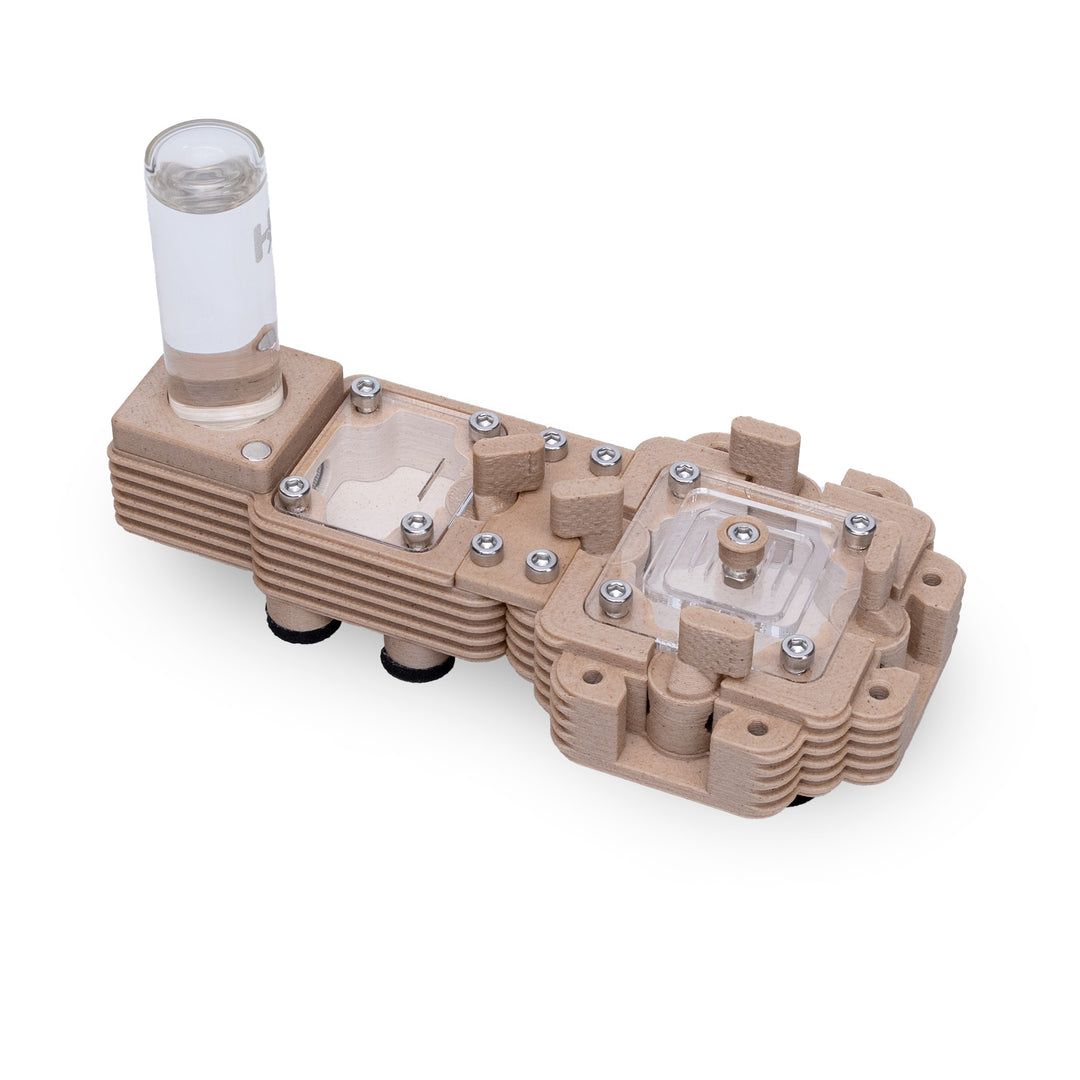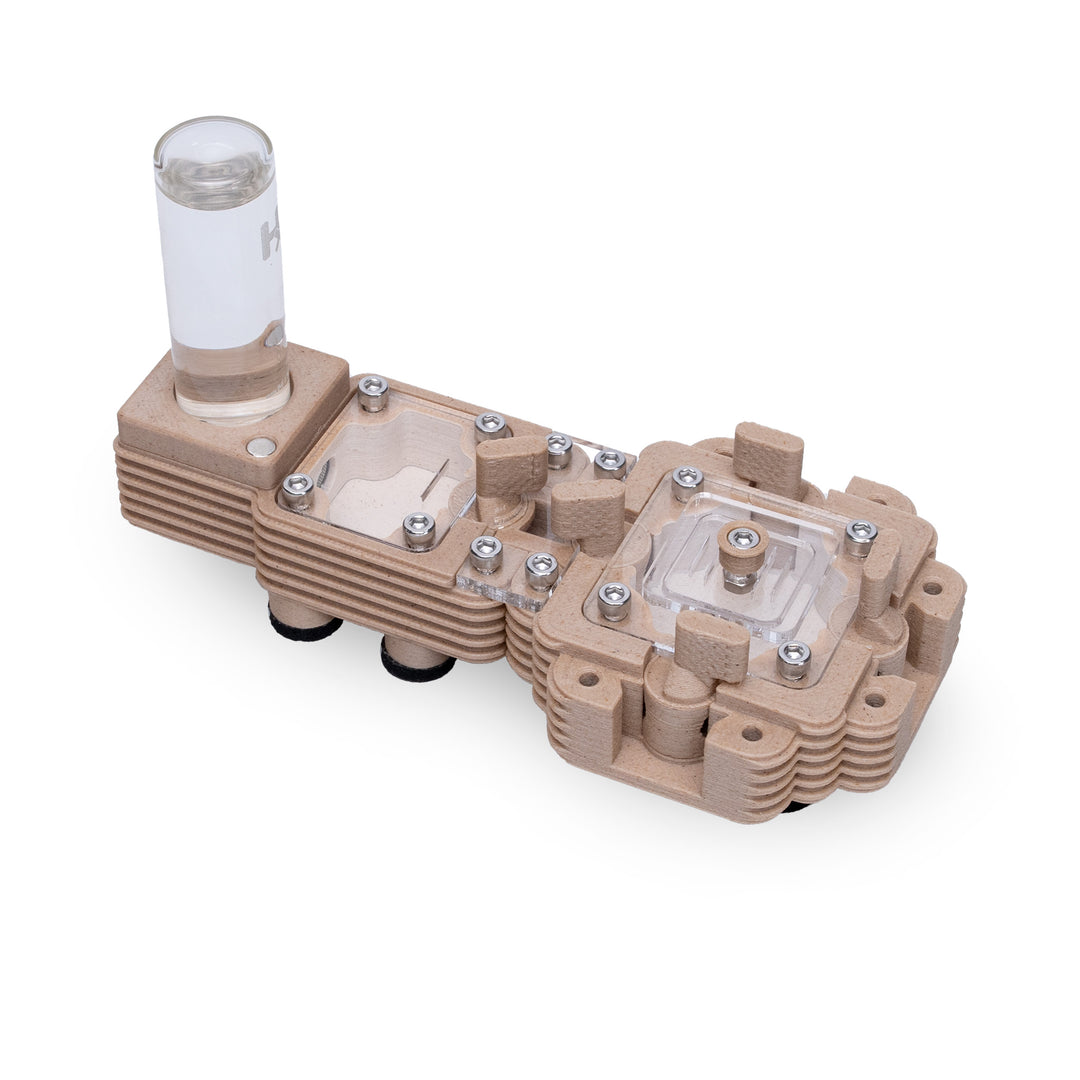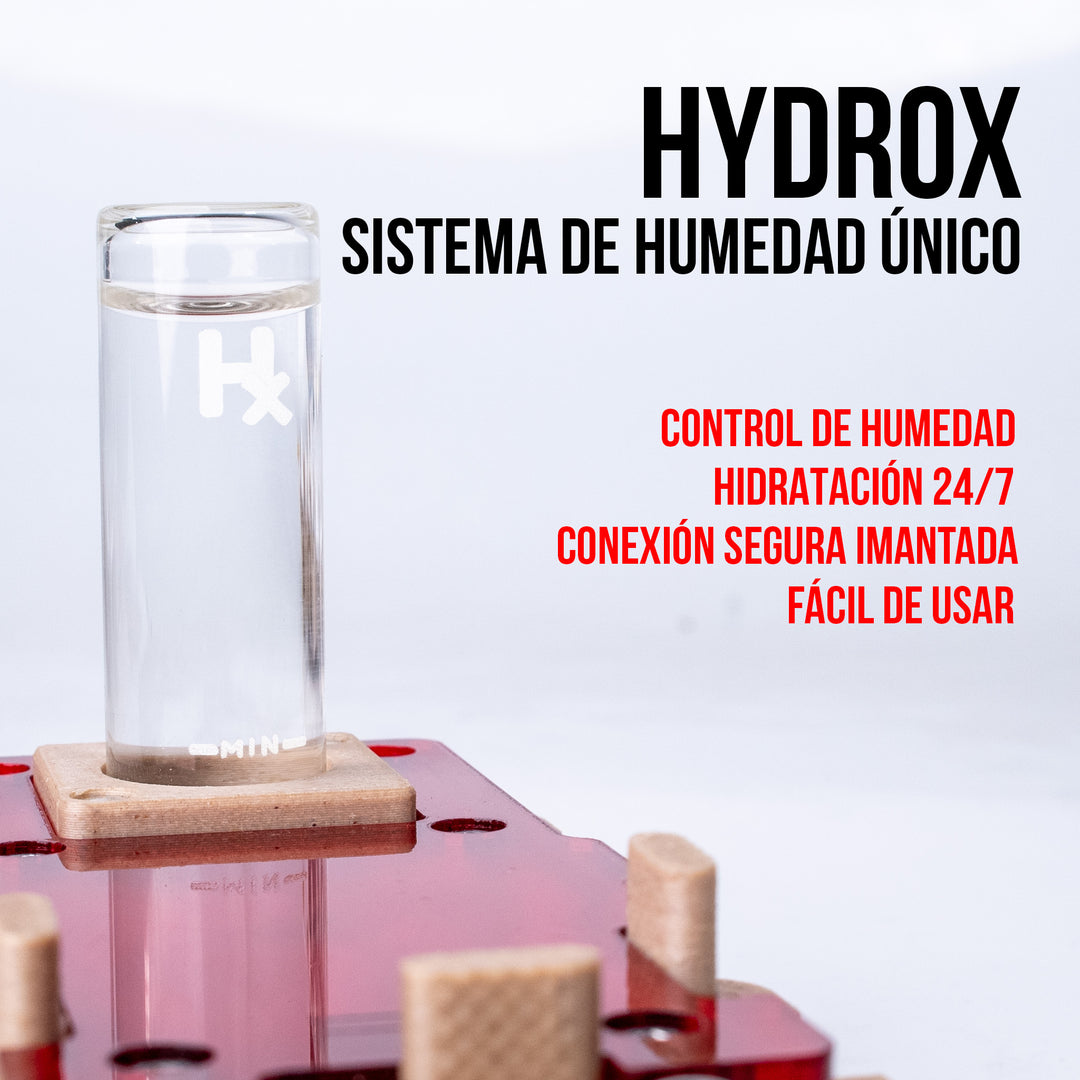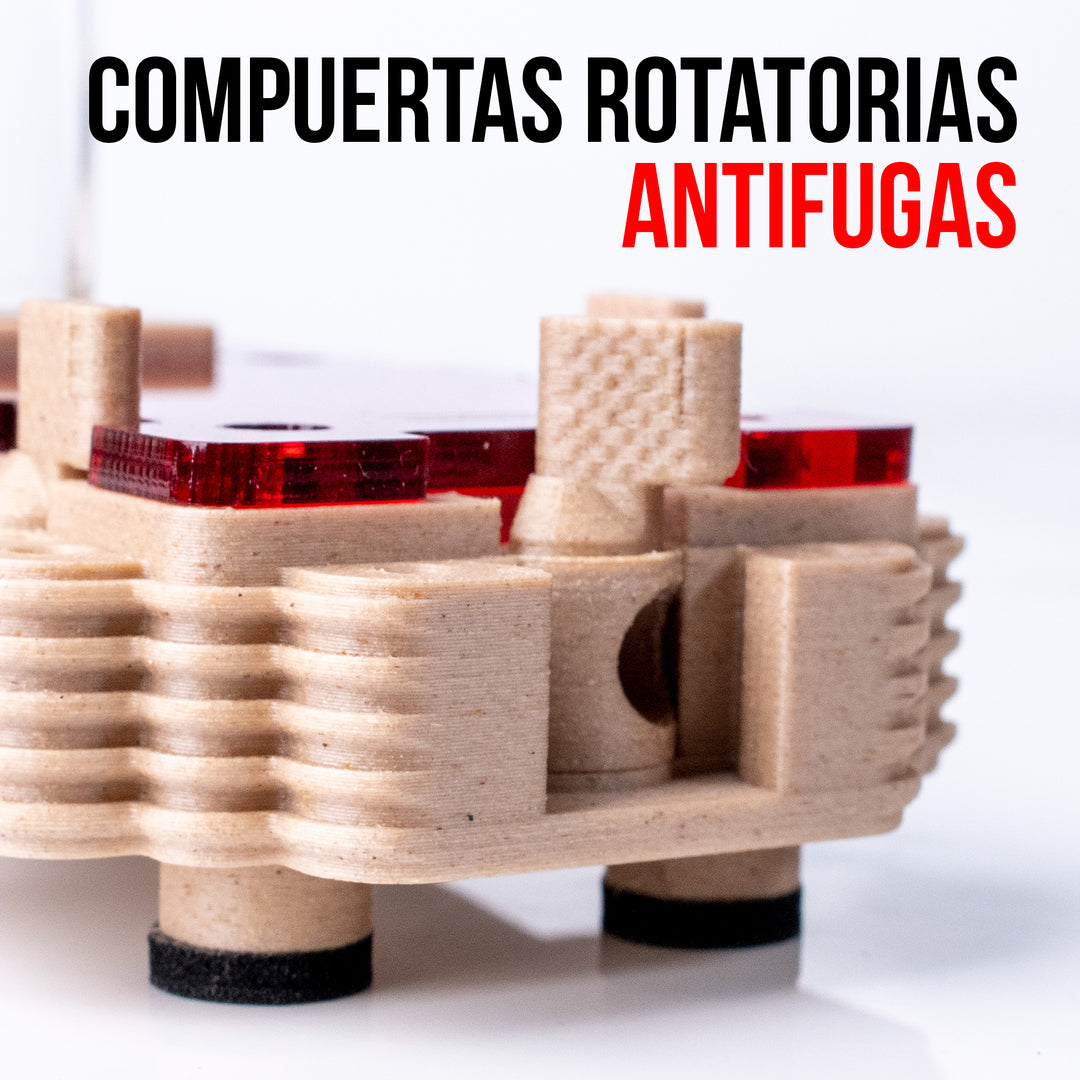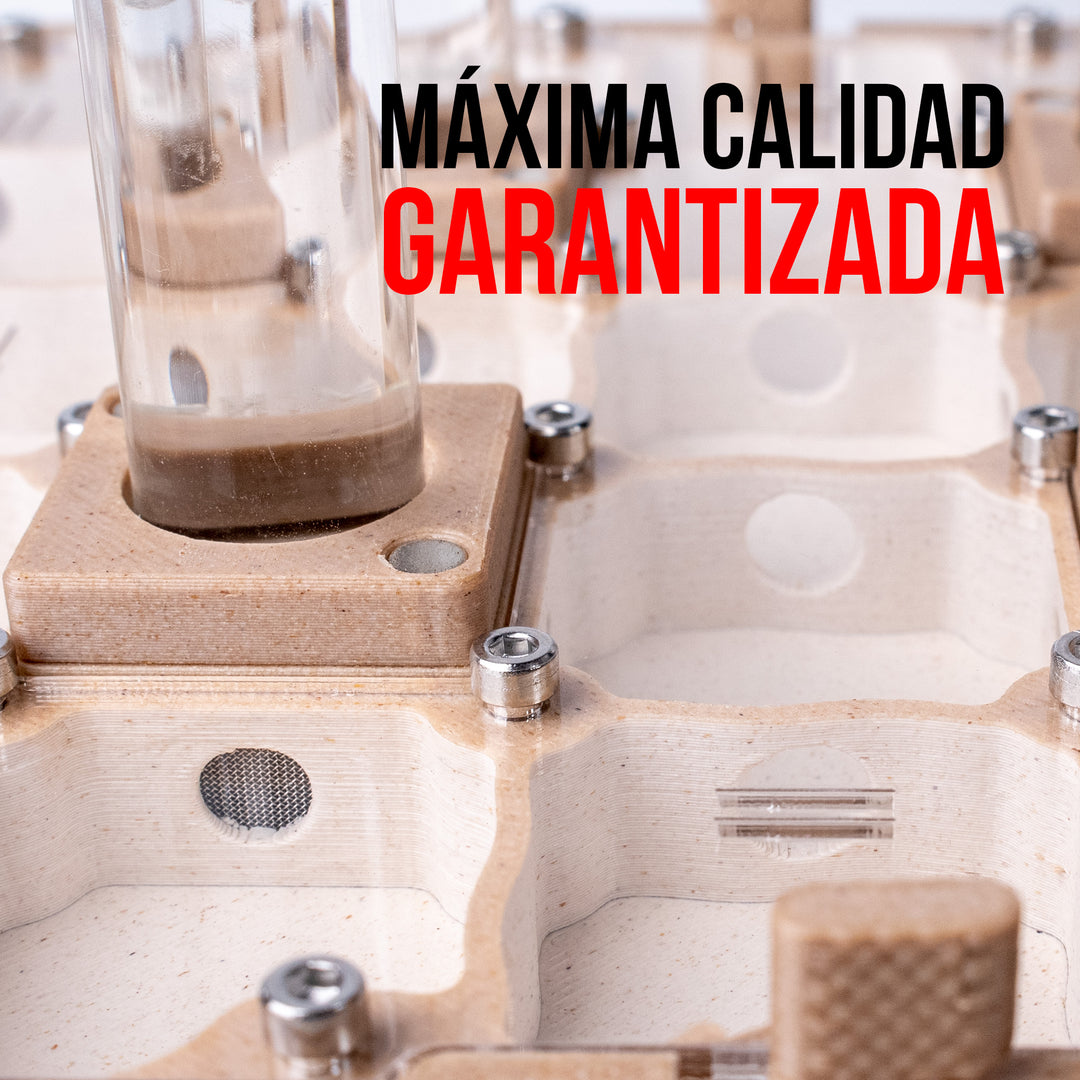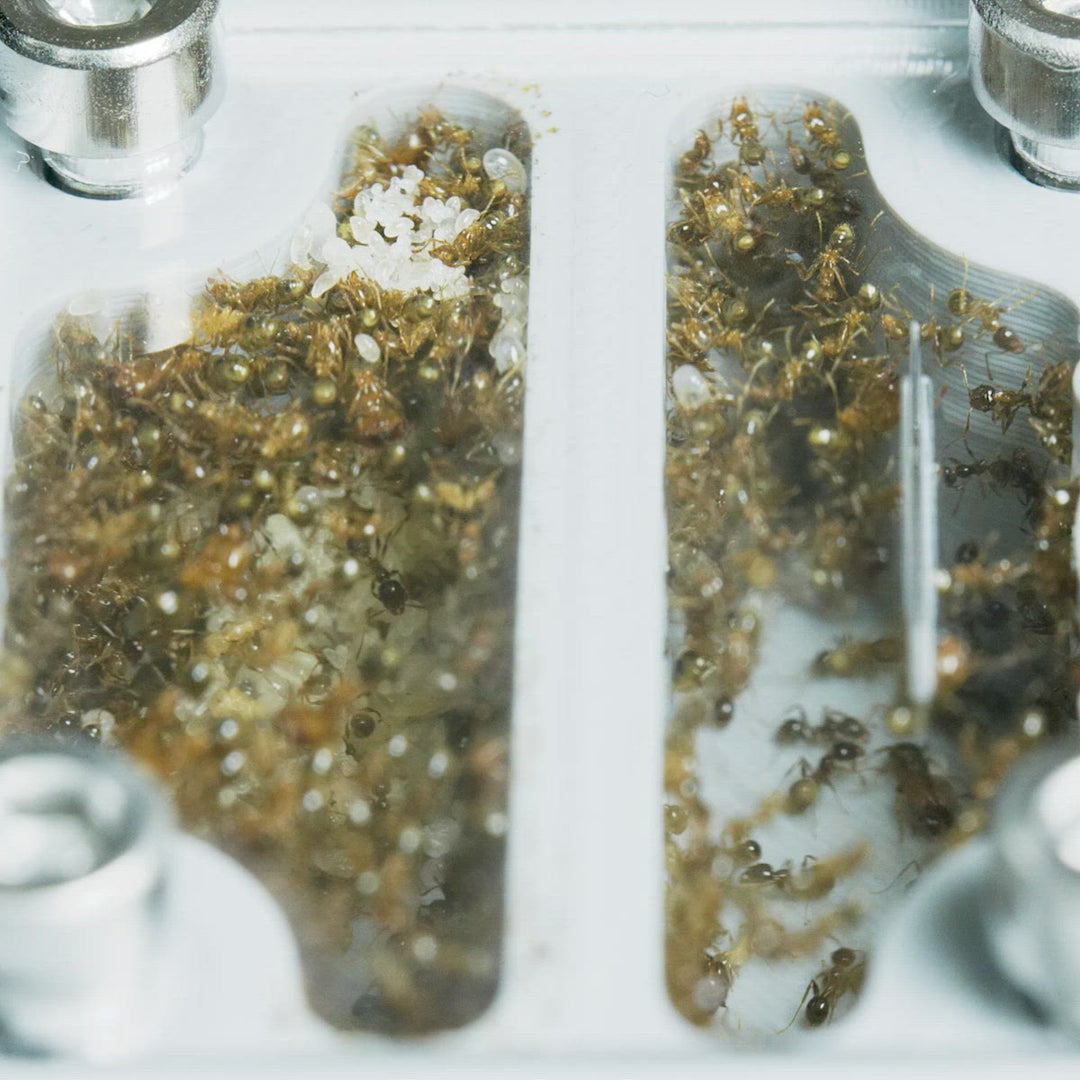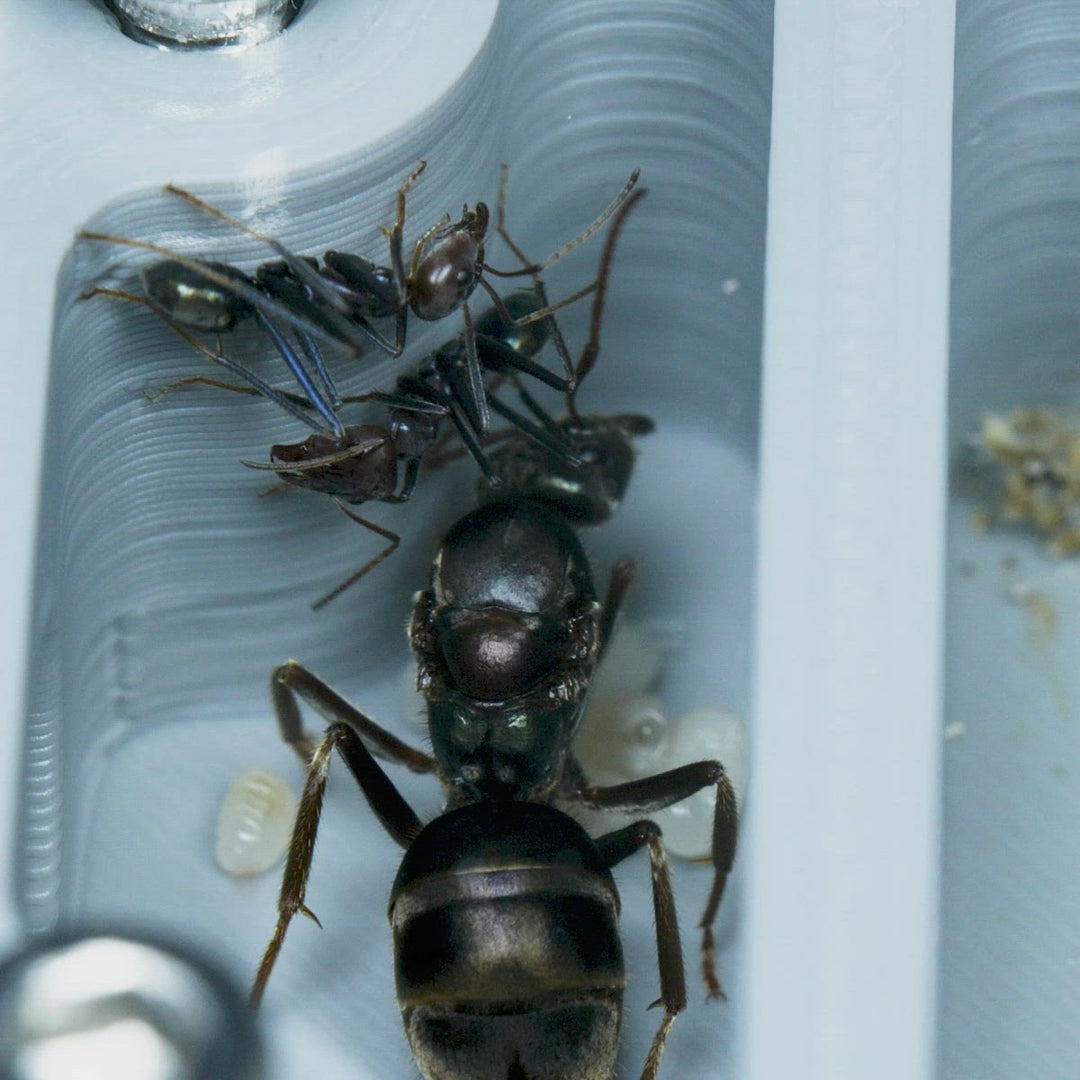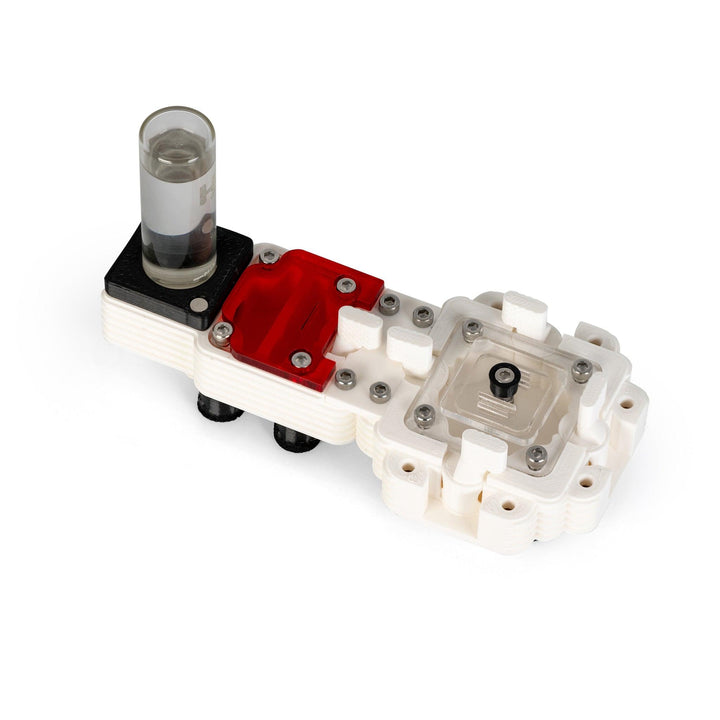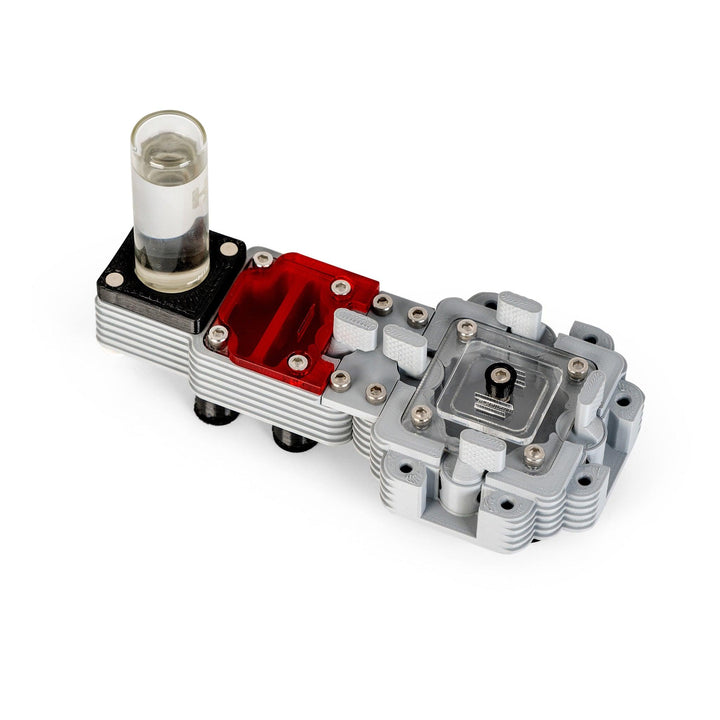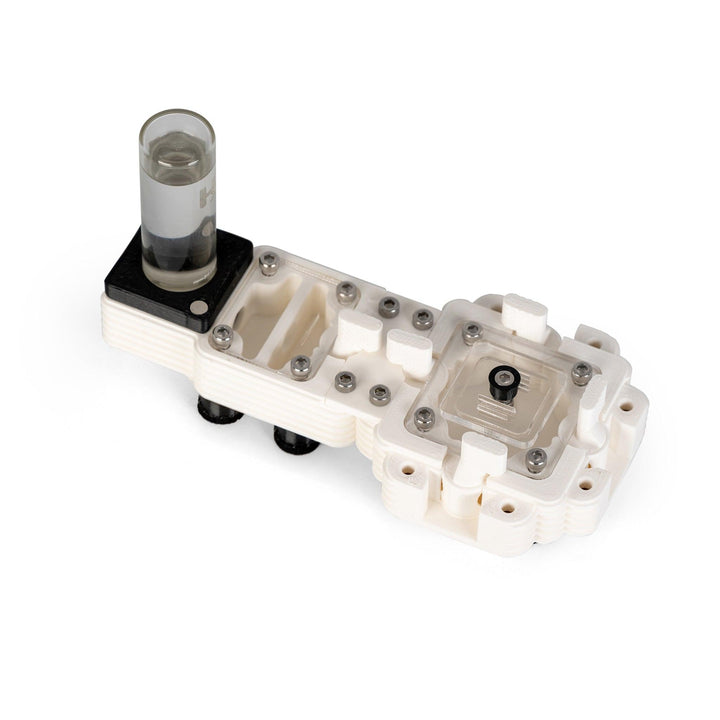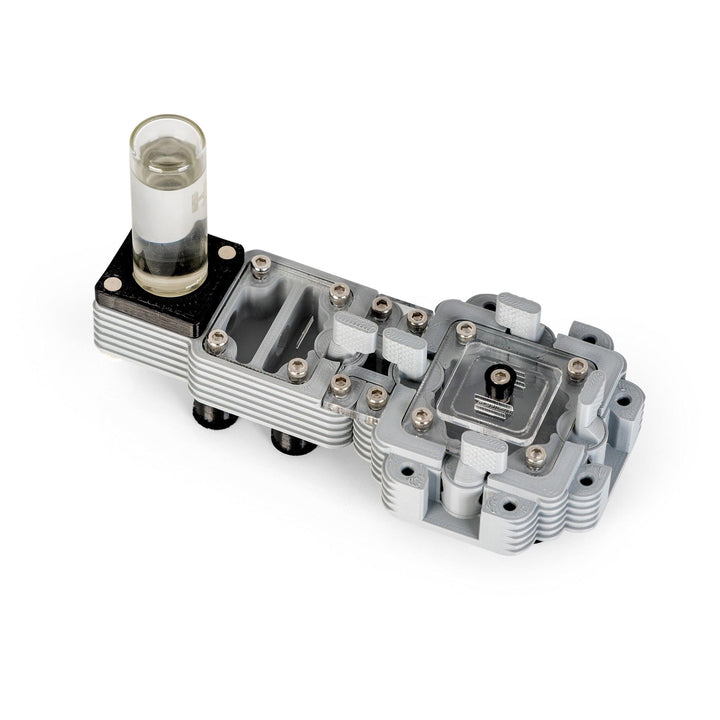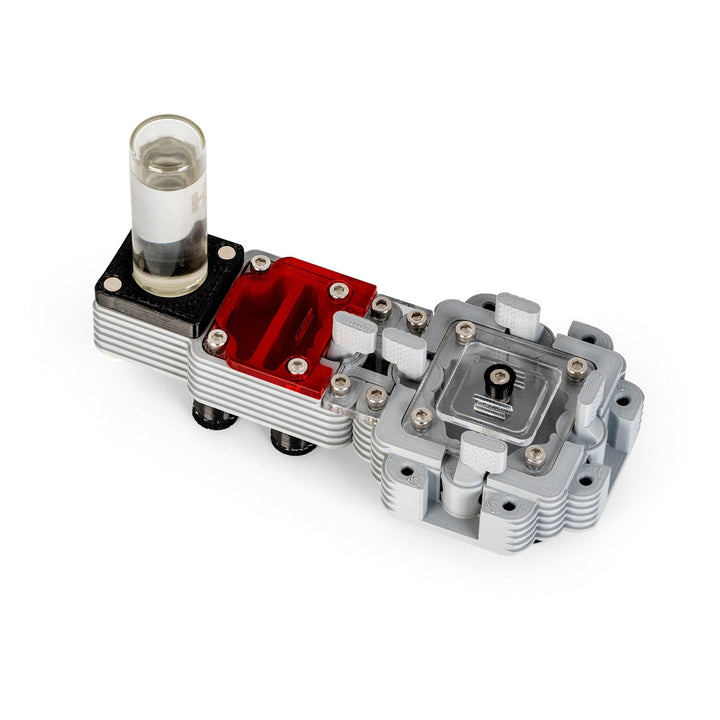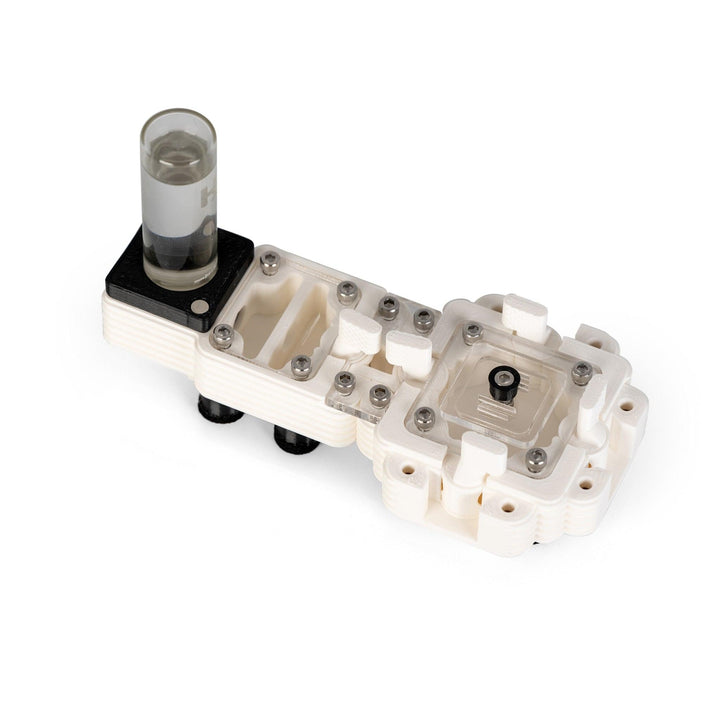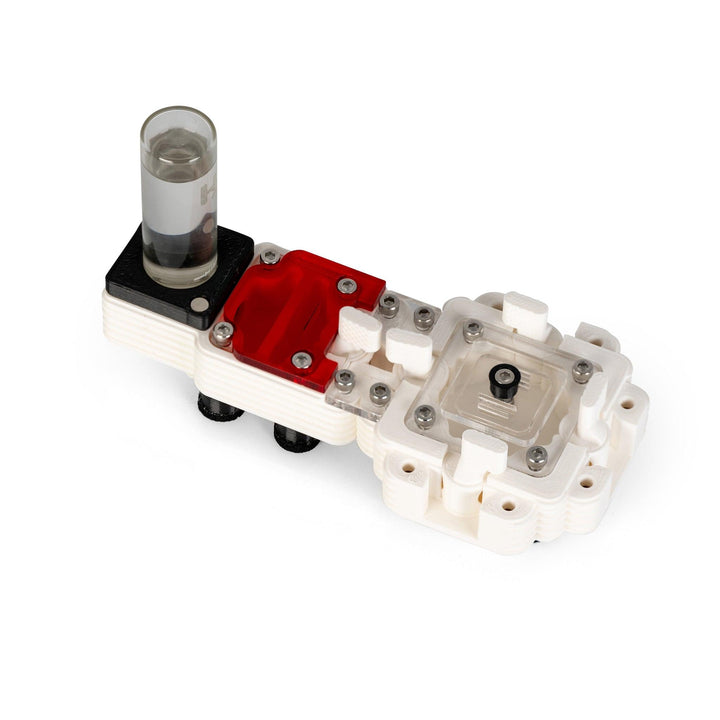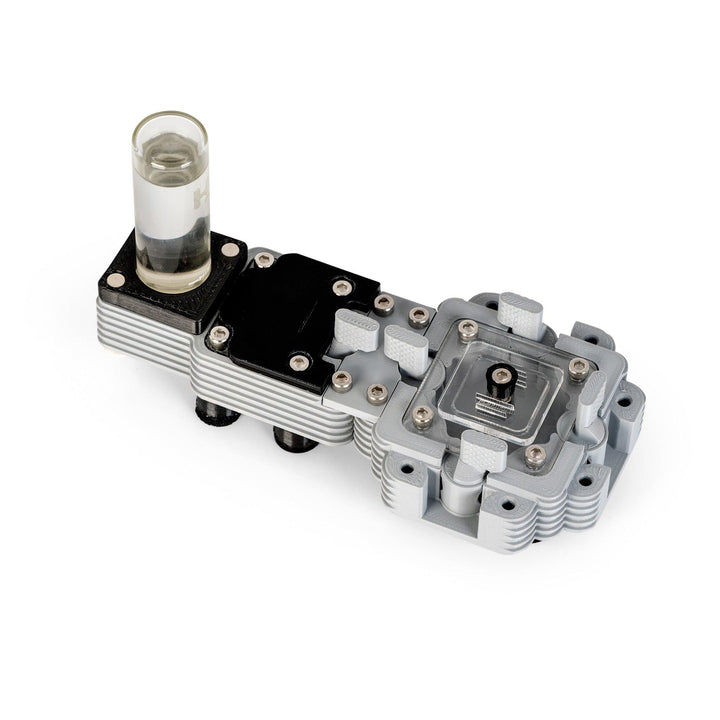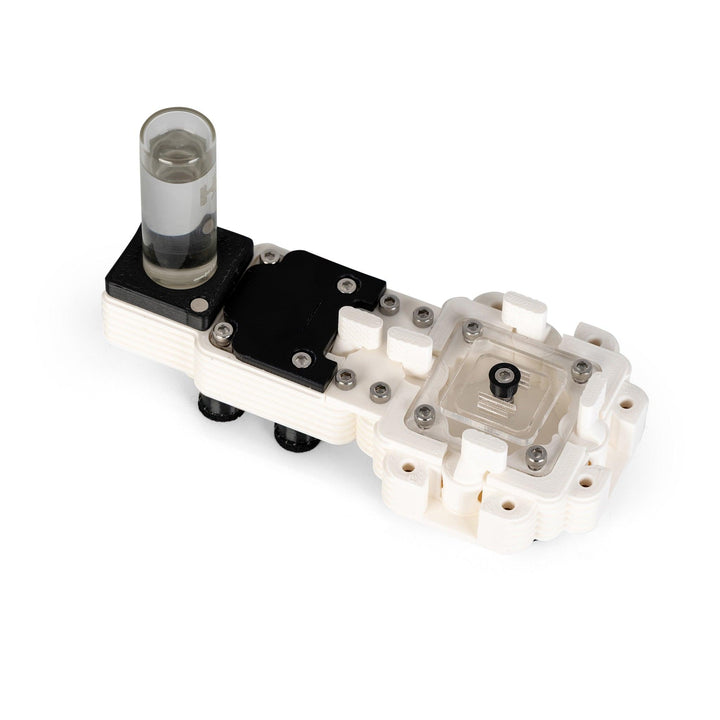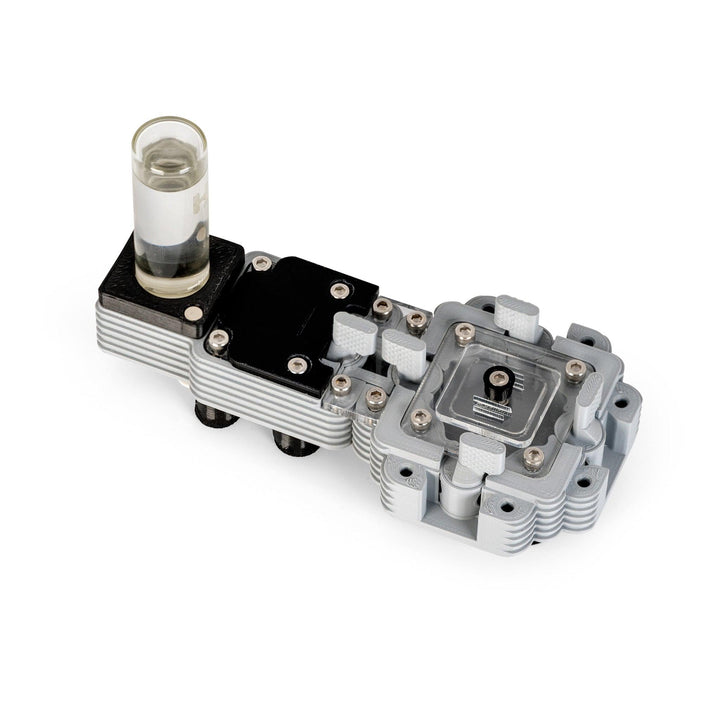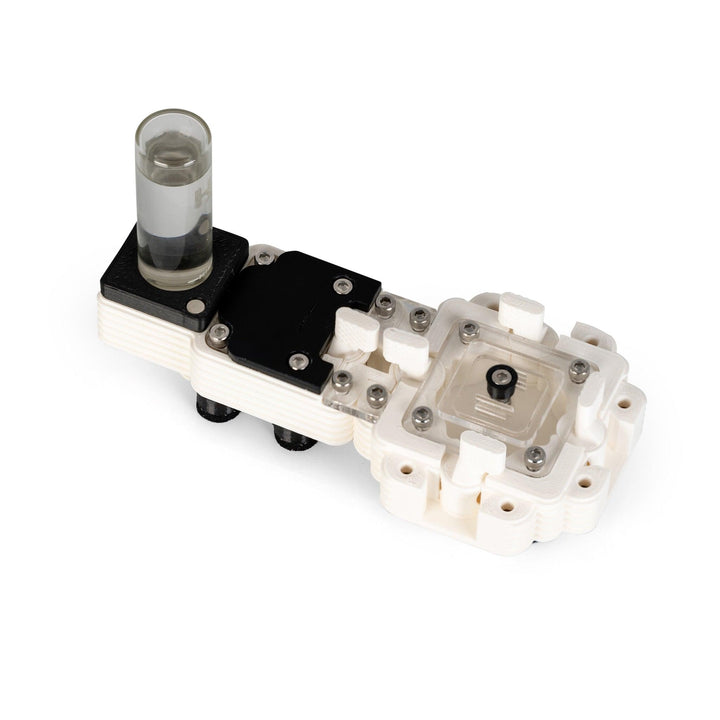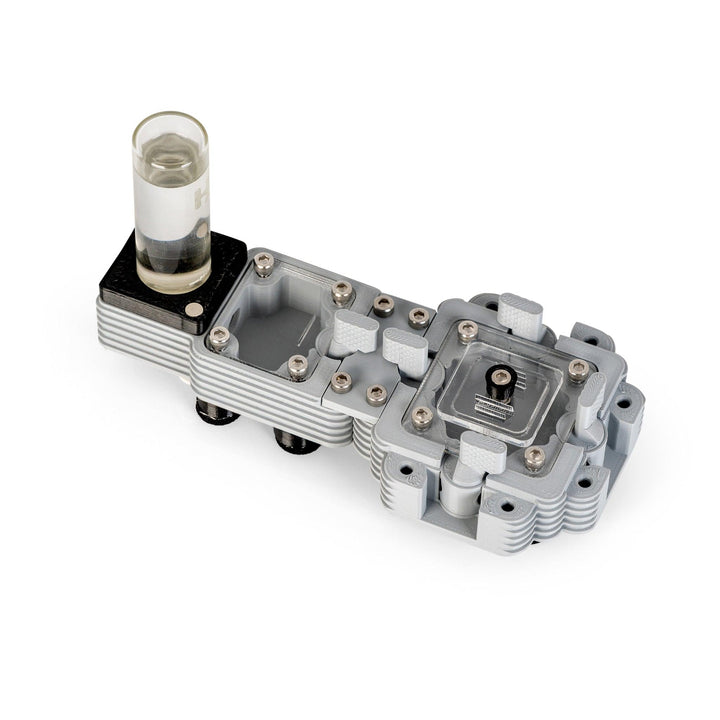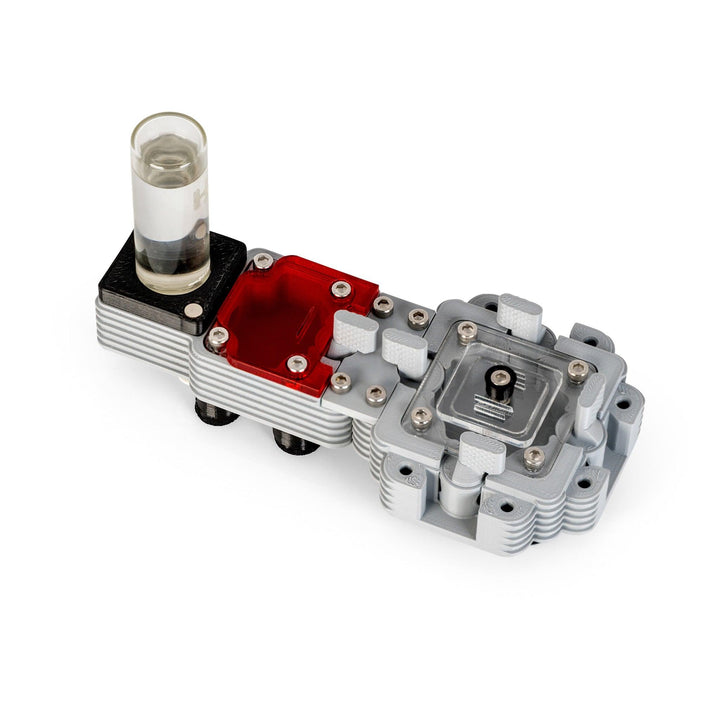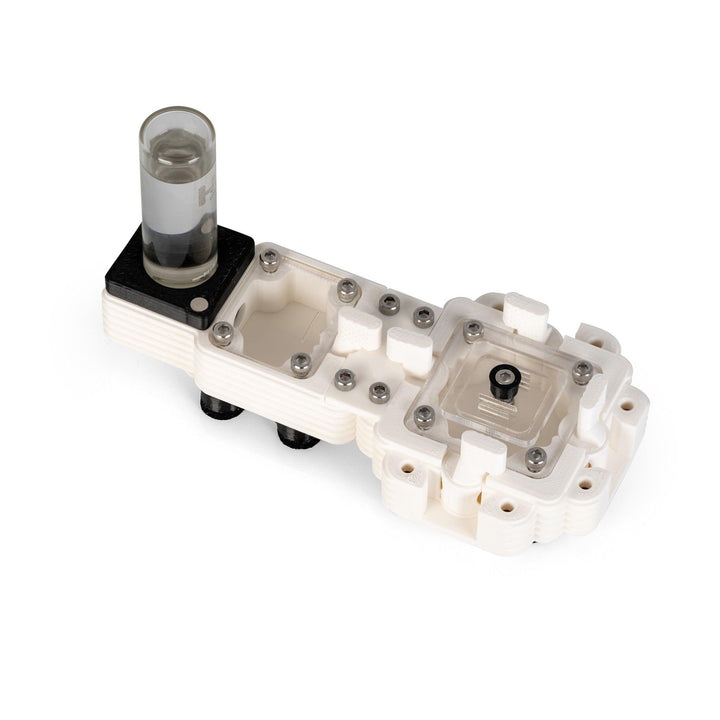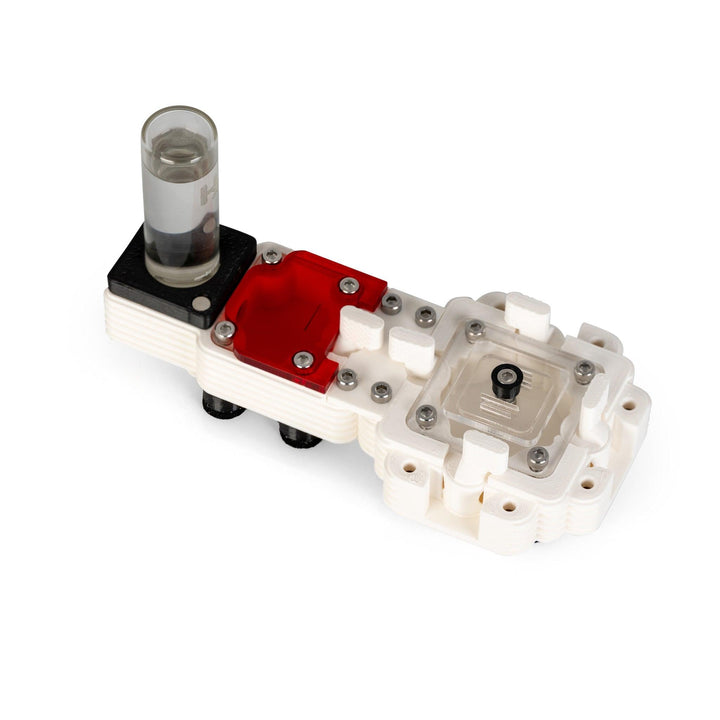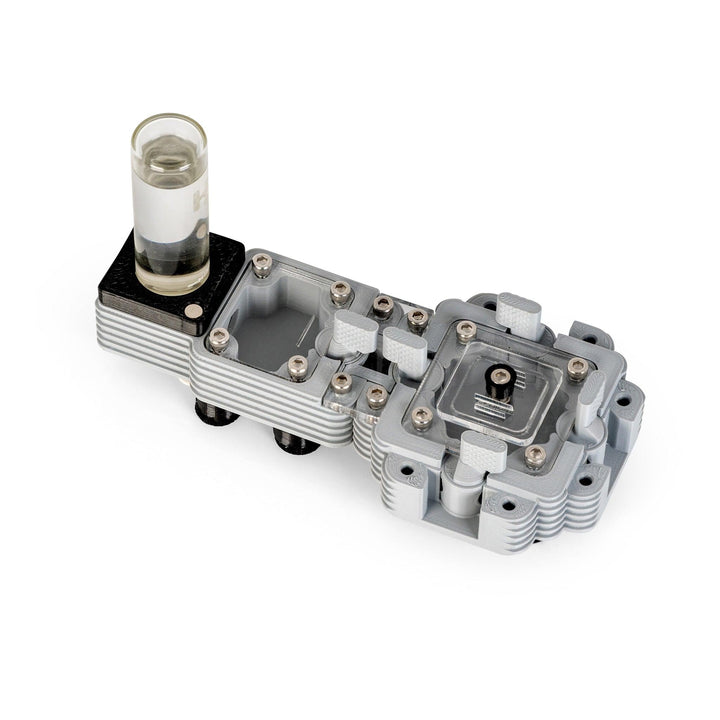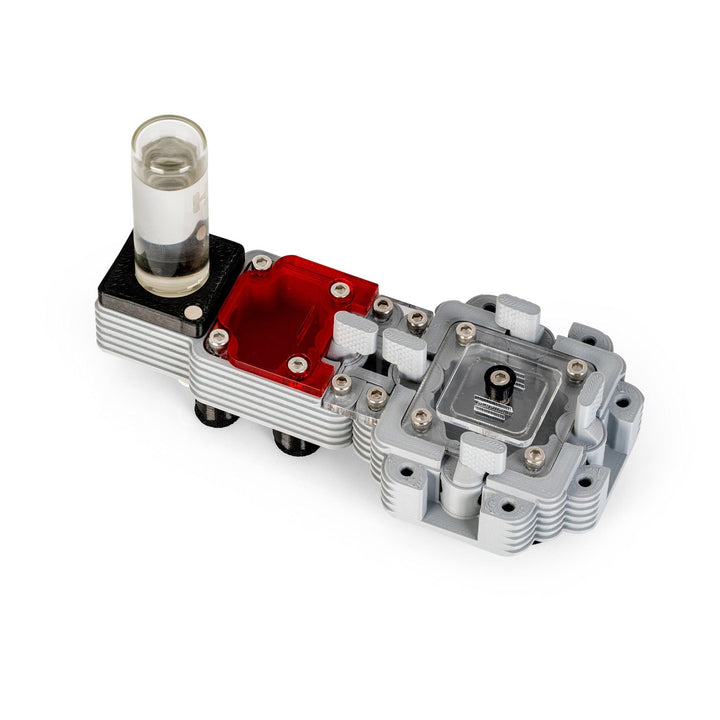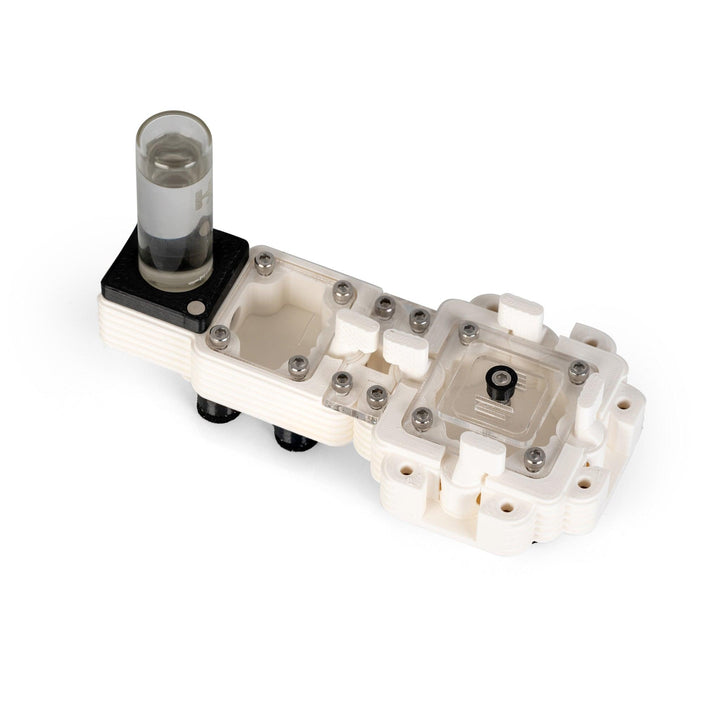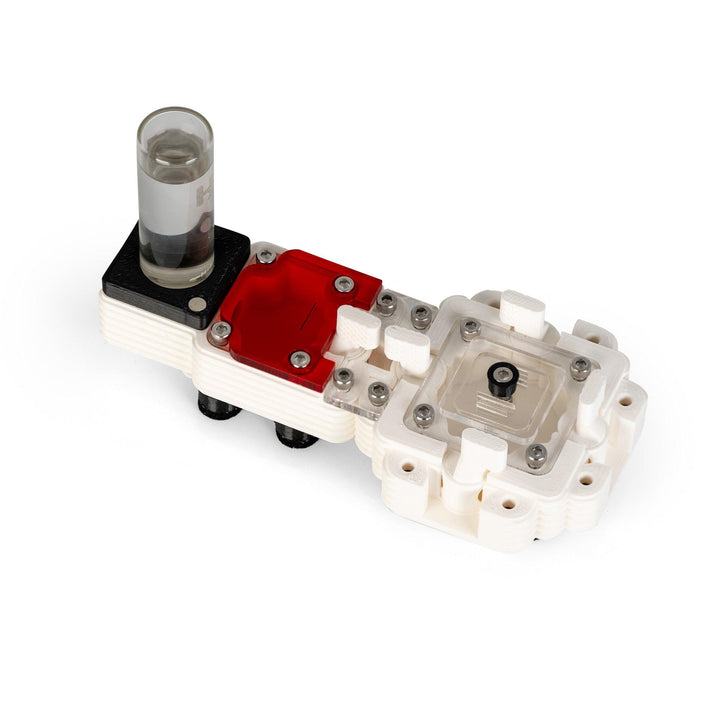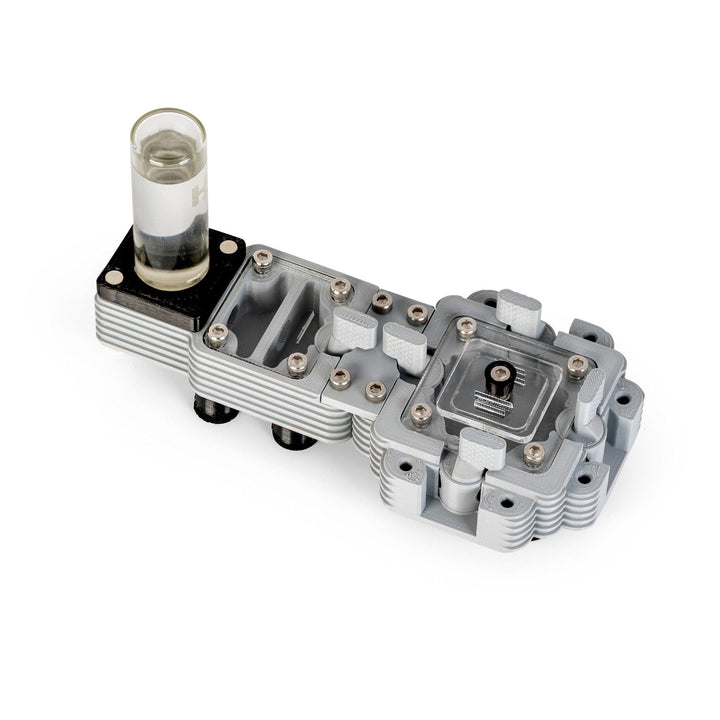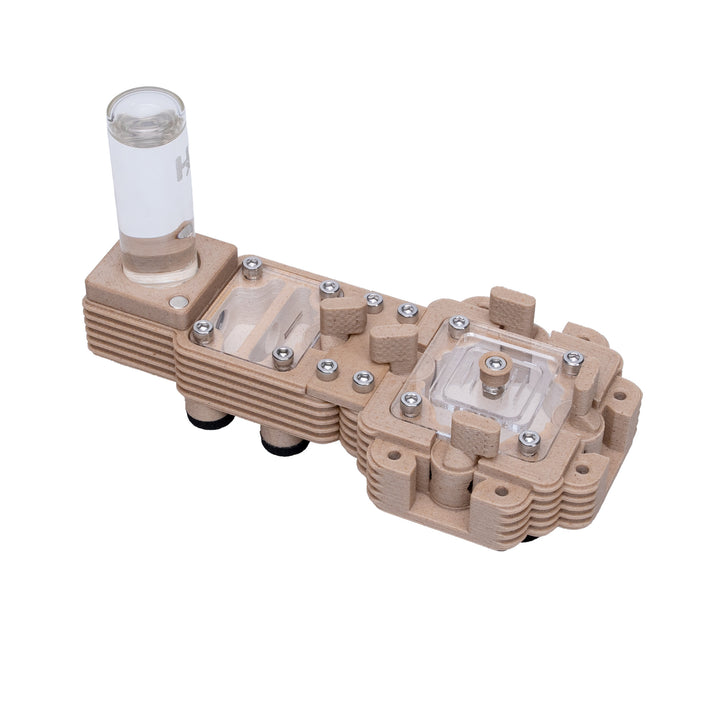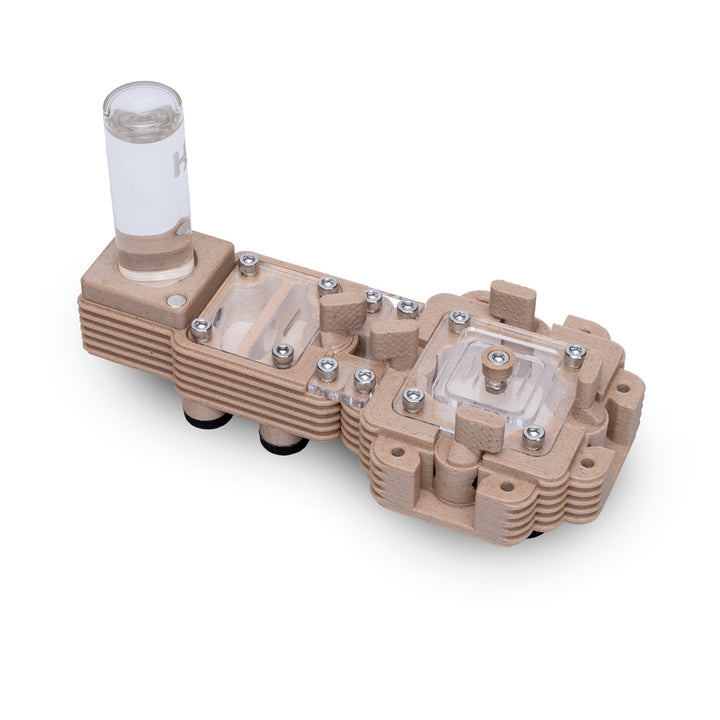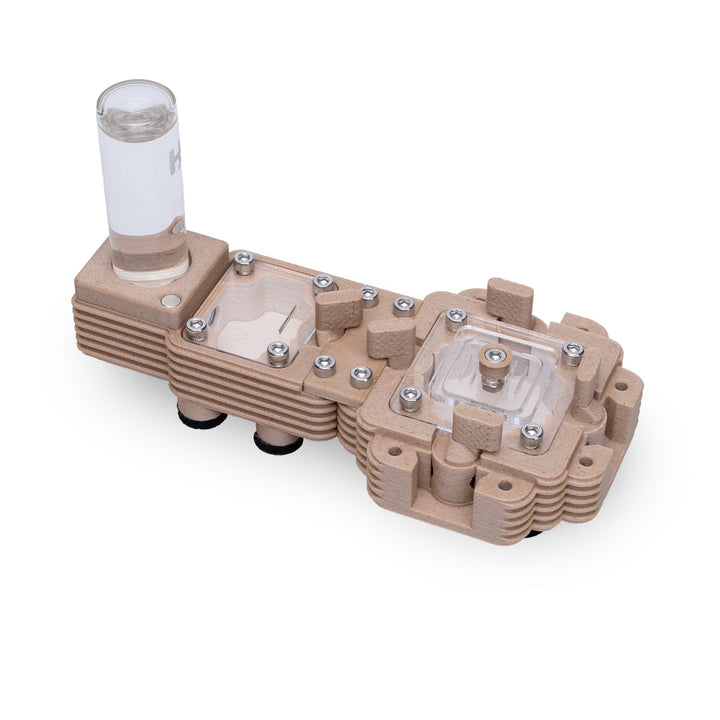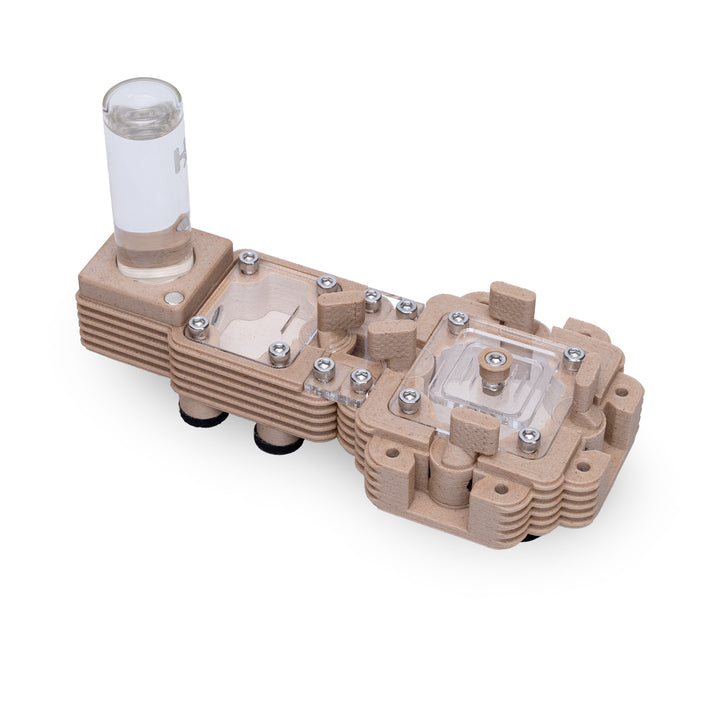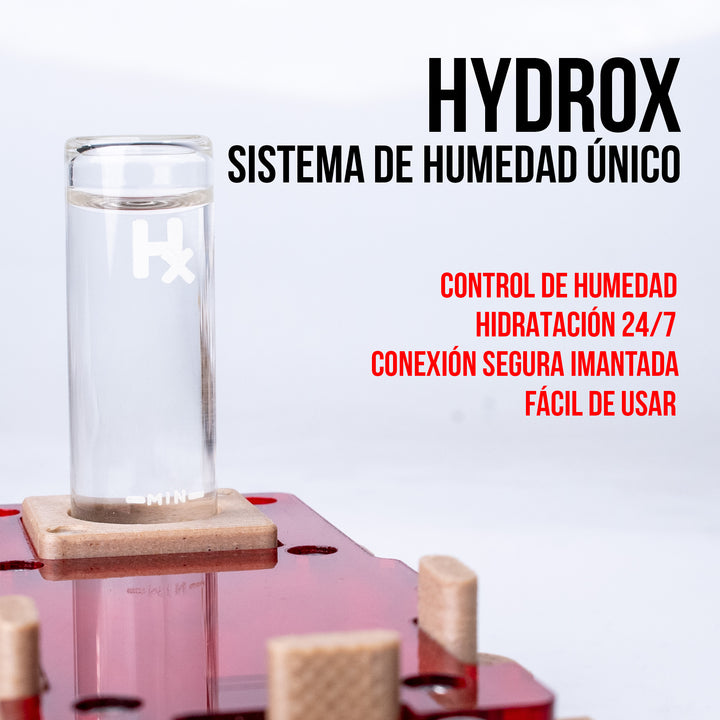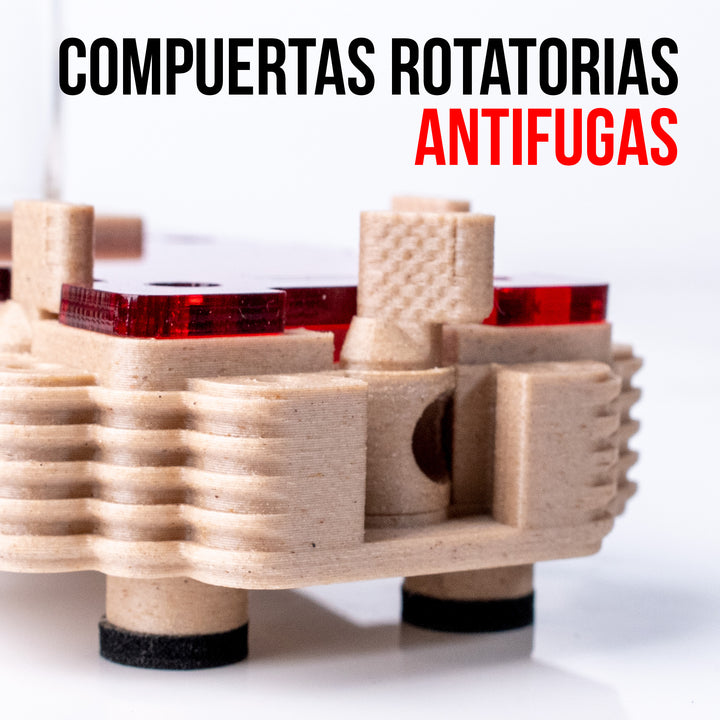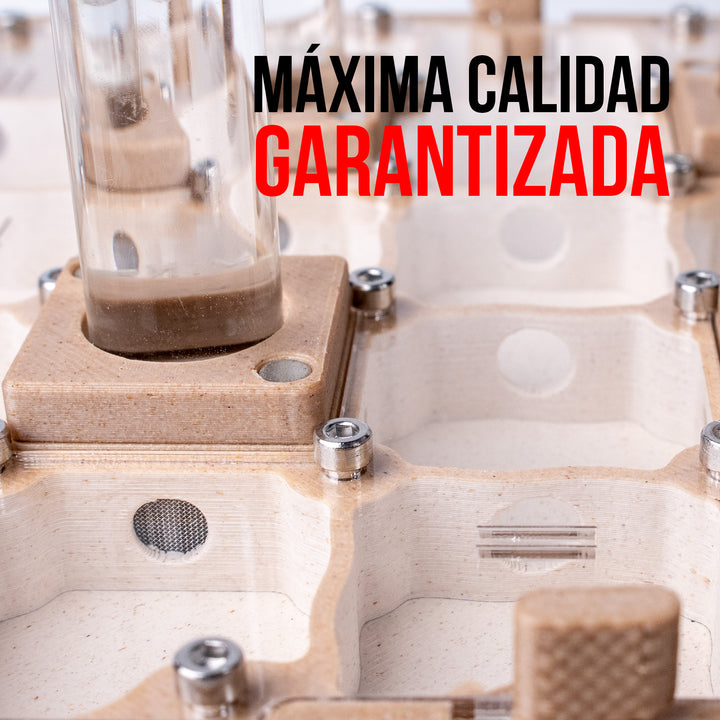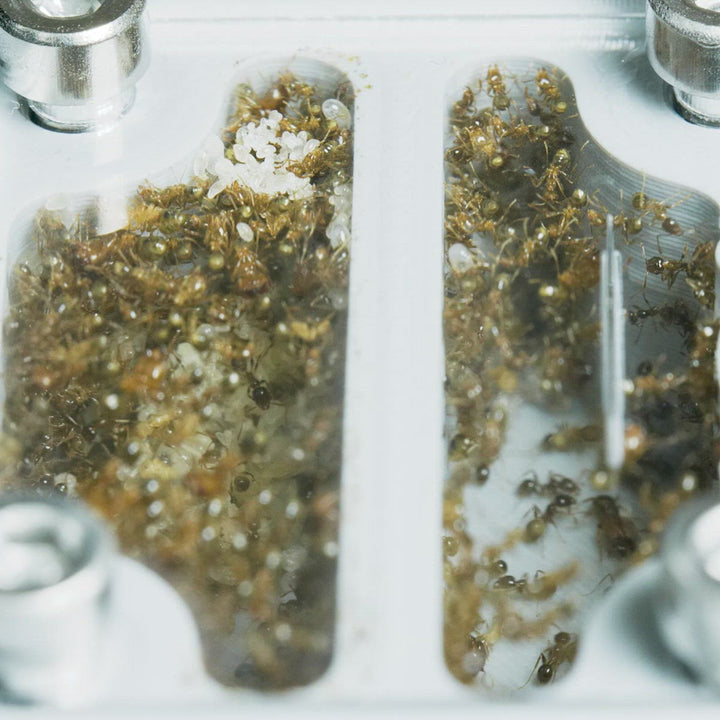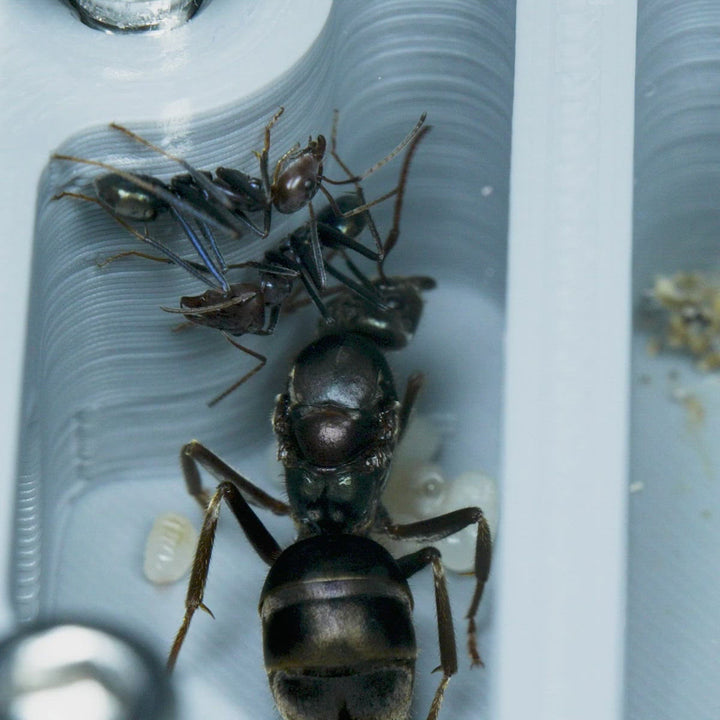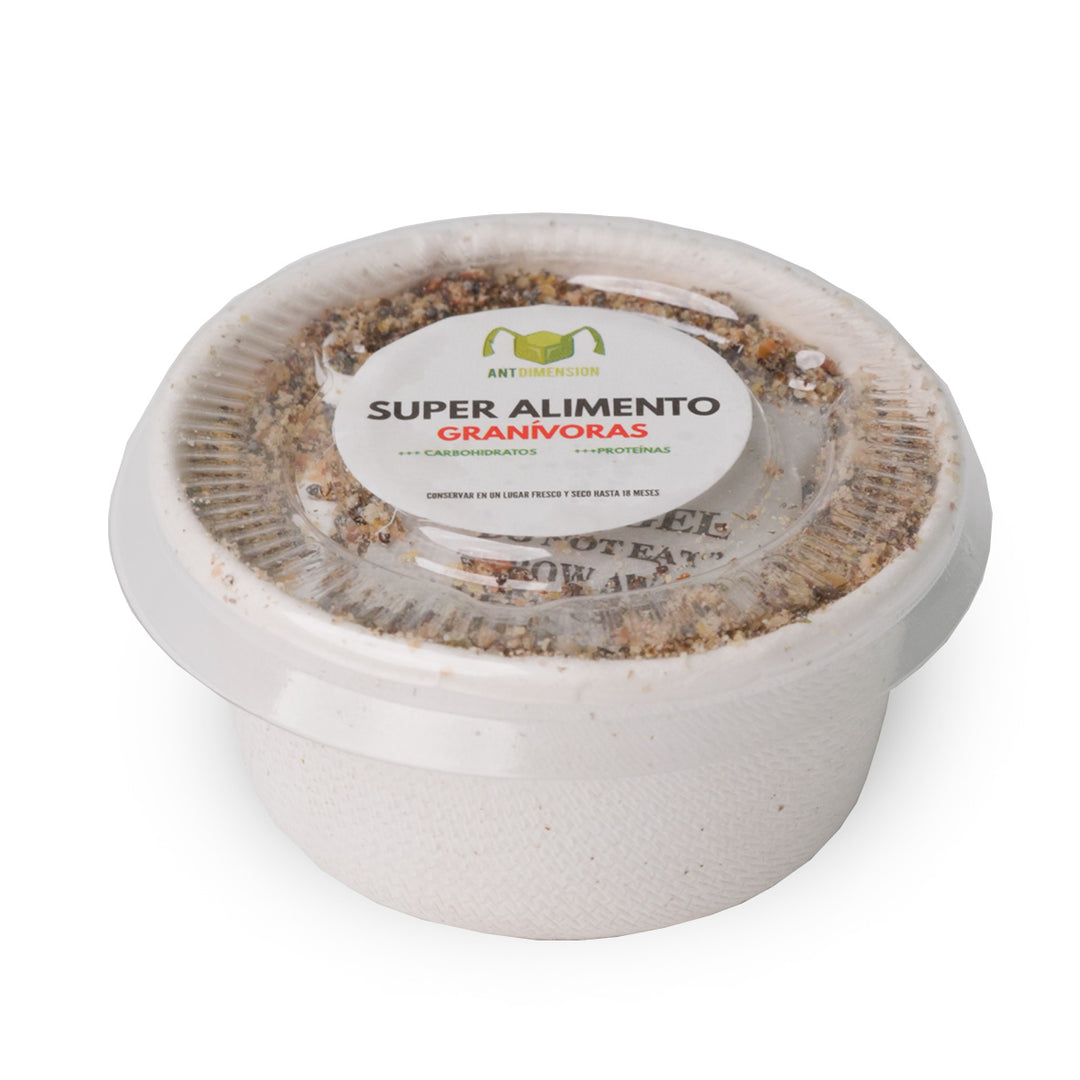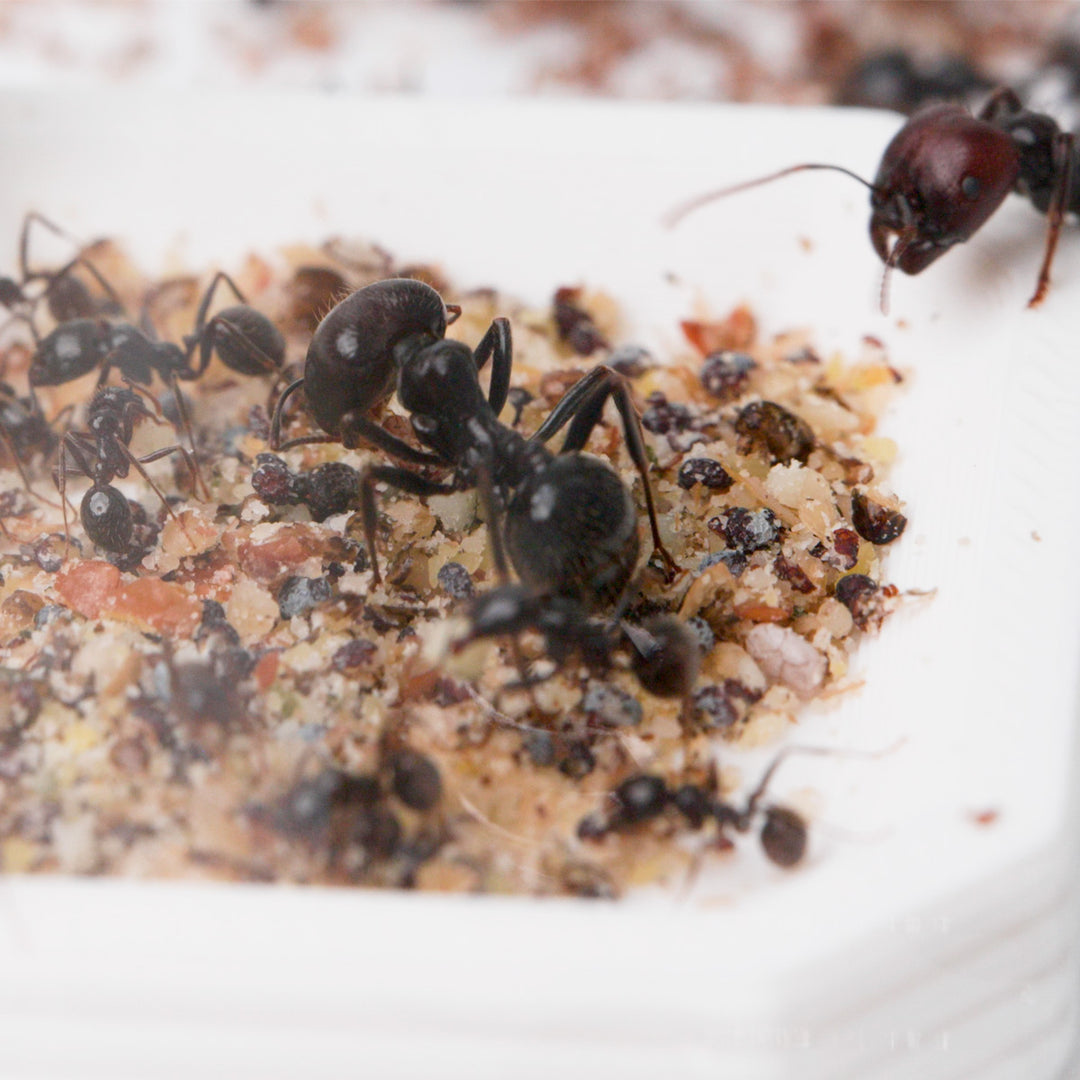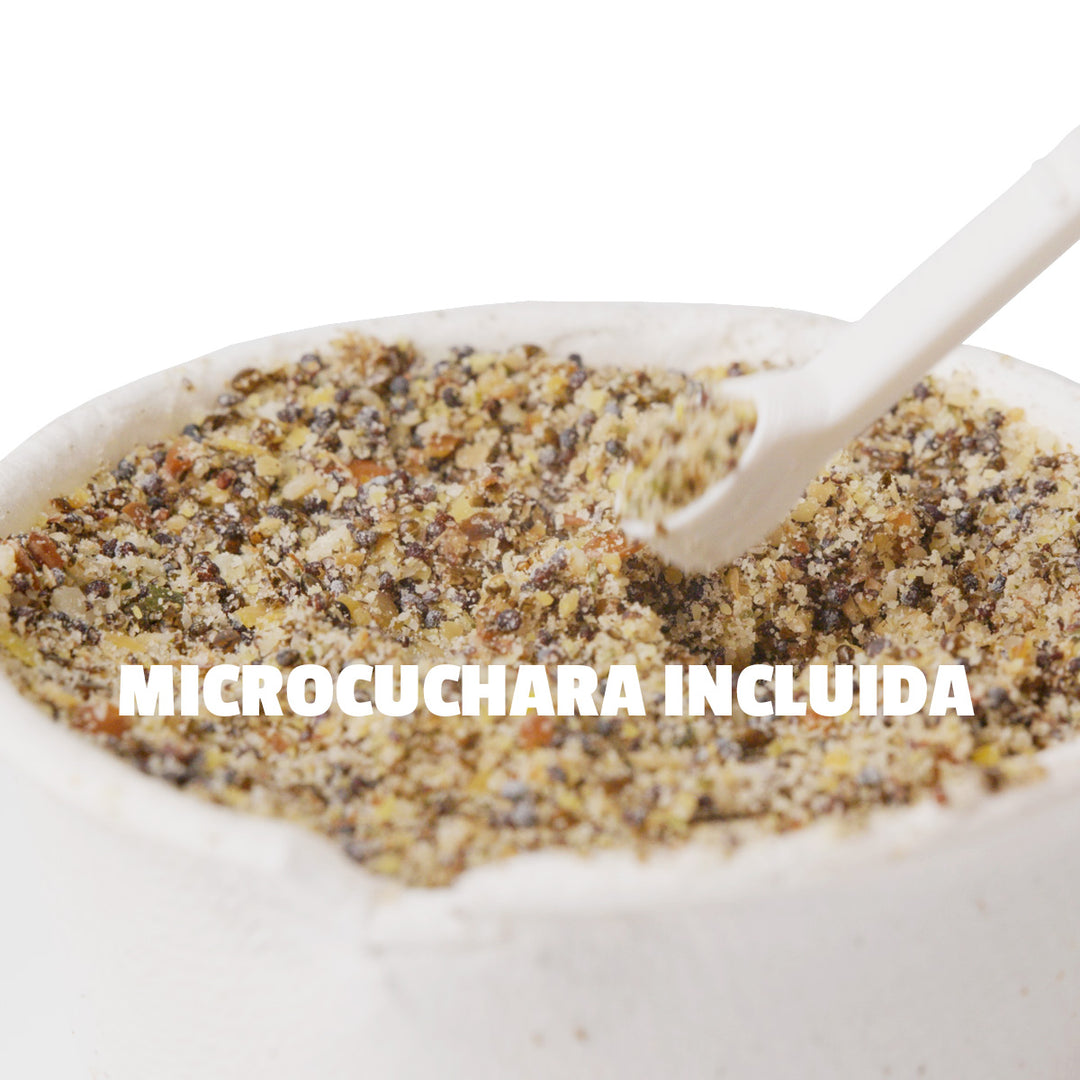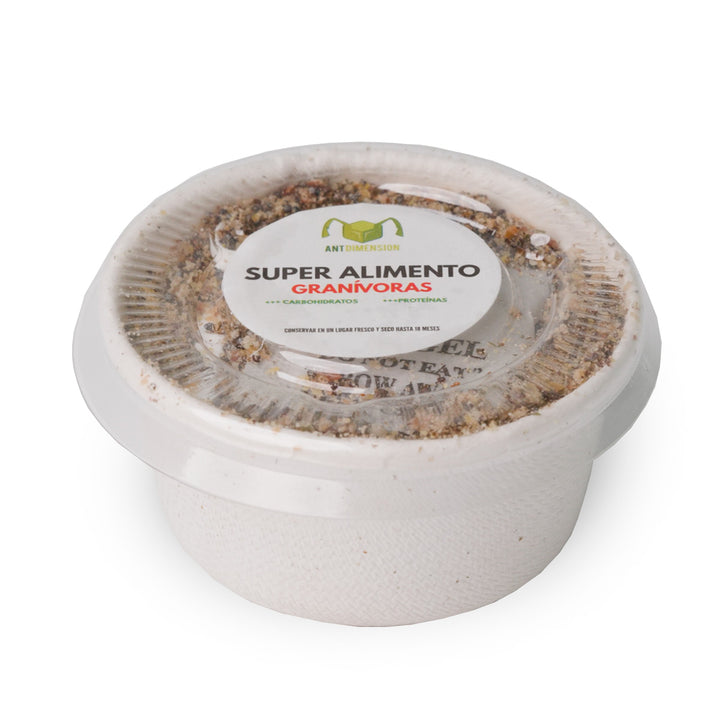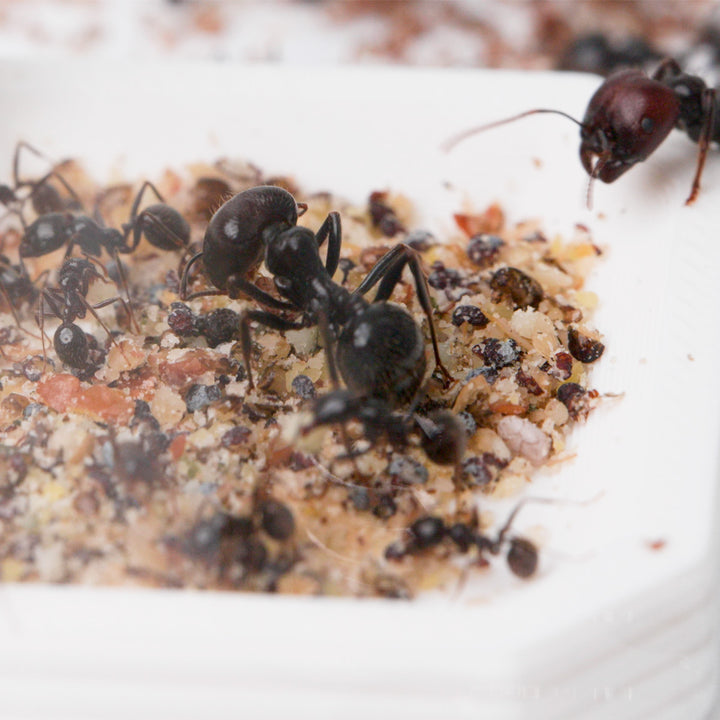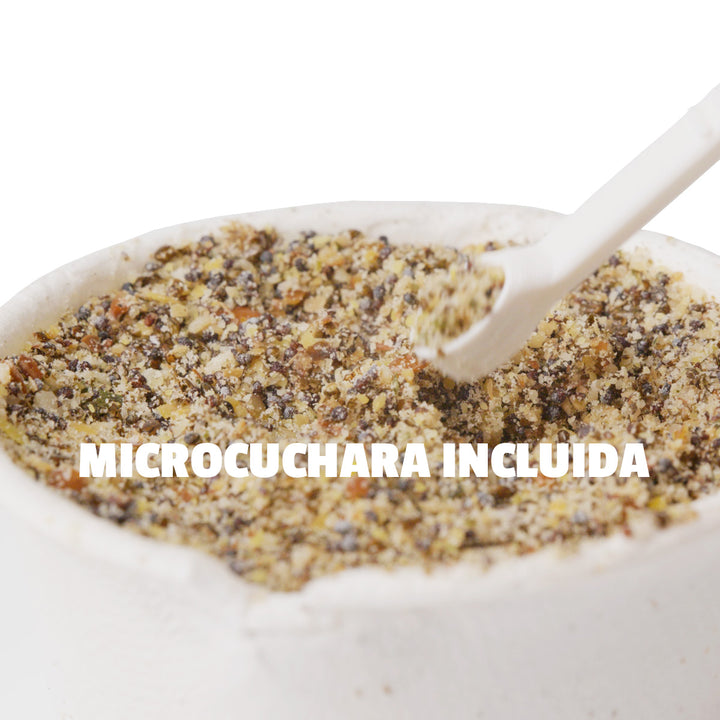Crematogaster scutellaris — Ideal for Beginners
Crematogaster scutellaris, commonly known as the “acrobat ant,” is a highly active and colorful Mediterranean species. It’s easily recognized by its heart-shaped abdomen, which it raises when alarmed, and its preference for wooden or cork substrates. This species is a fantastic choice for those who enjoy observing daily activity, quick foraging, and organized behavior within the nest. With a simple omnivorous diet (sugars + proteins) and easy maintenance, it offers a lively and engaging ant-keeping experience.
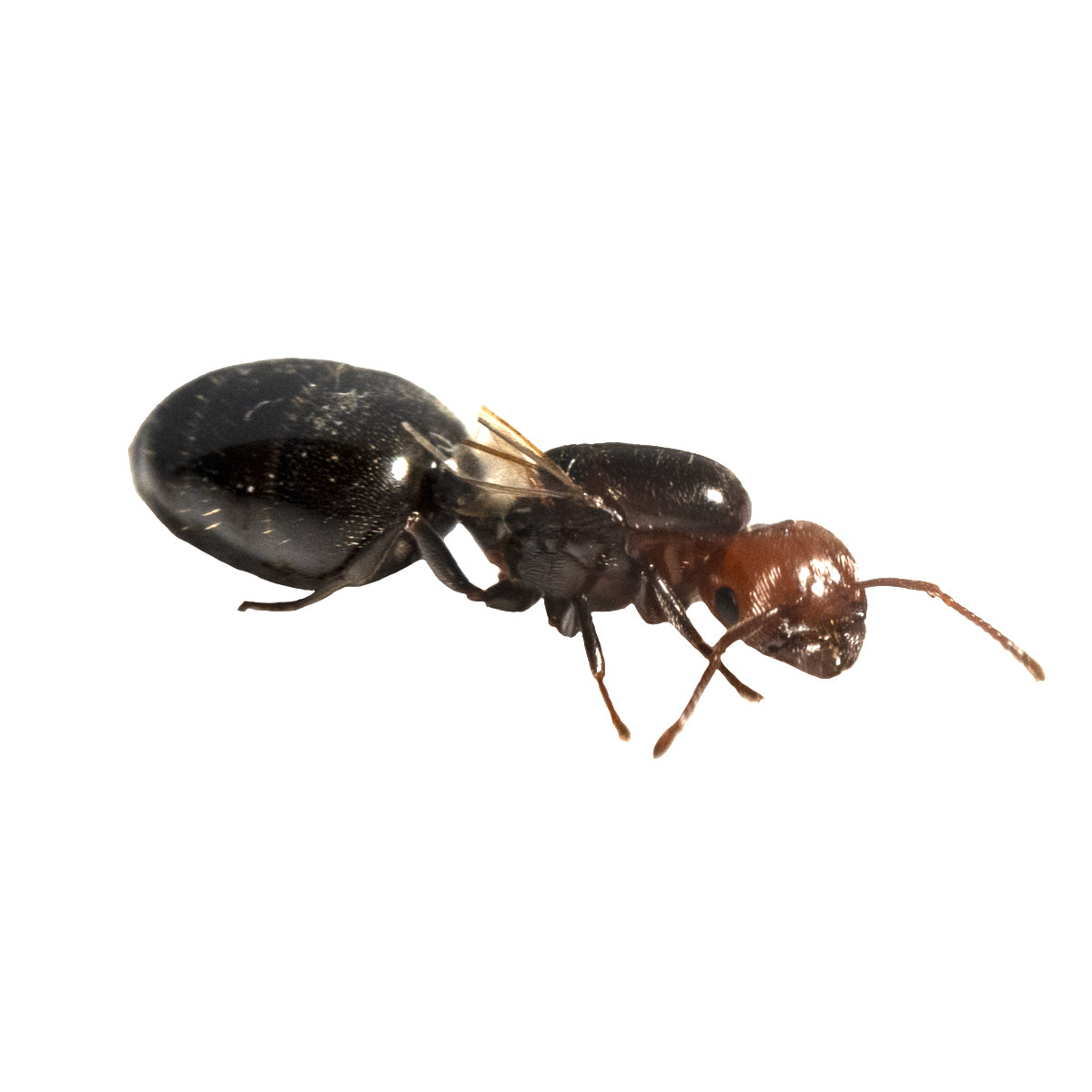
Características principales
Especie omnívora: Acepta azúcares (agua con azúcar o néctar Sunburst) y proteínas (grillos, tenebrios y cucarachas), lo que facilita una alimentación variada y estable.
Tamaño: Obreras pequeñas de ~3–5 mm y reina de ~8–9 mm. Su bicoloración (cabeza rojiza y gáster oscuro) las hace muy llamativas en el hormiguero.
Muy activas y escaladoras: Gran movilidad en vertical y excelente agarre. Recomendable usar una buena barrera anti-escape en la zona de forrajeo con nuestro aceite mineral.
Comportamiento Fascinante: Elevan el gáster en forma de “corazón” como señal defensiva, muestran comunicación constante y una organización muy visible durante el forrajeo.
Benefits for the Keeper
Hardy and Adaptable Species
It adapts well to wooden or 3D nests with distinct humidity zones, showing a particular preference for low to medium humidity. Grows quickly under warm, stable conditions.
Ideal for Education and Observation
Its constant activity and bicolored morphology make it easy to observe social roles and behaviors.
Easy Maintenance
It doesn’t require high humidity or constant live food if processed proteins are provided; the key is maintaining an effective anti-escape barrier.
Complete Experience from Beginners to Experts
Suitable for responsible beginners and highly enjoyable for advanced keepers looking for dynamic colonies and wooden or vertical setups.
Care Instructions
Diet: Provide constant carbohydrates (sugar water or Sunburst nectar) and proteins 2–3 times a week (micro-insects, pieces of mealworm, or protein jellies). Remove leftovers to prevent mold.
Habitat: Performs especially well in wooden nests (semi-arboreal behavior) or in 3D nests with one humid chamber and drier ones. Add branches or bark in the foraging area for exploration. Always use an anti-escape barrier (mineral oil).
Temperature & Humidity: Optimal range: 22–28 °C. Nest humidity 50–70 % with one slightly wetter area; the foraging box can be kept drier (30–50 %). Ventilate regularly to prevent fungus.
Hibernation: Activity decreases in winter; a light brumation at 10–15 °C for 6–10 weeks is recommended, with reduced feeding until activity resumes.
Warranty in Every Dimension
Live Colony Guarantee
We guarantee delivery of a healthy colony. If there’s any issue with the colony upon arrival, we’ll provide a replacement.
FERTILITY GUARANTEE
We care for each colony from the moment the queens raise their first brood, ensuring every colony is led by a fertile queen ready for steady, healthy growth.
Colonia Libre de Ácaros y Parásitos
Each colony is regularly inspected and again before every shipment to ensure it is free of mites and parasites. This guarantees the ants arrive in optimal condition, with no risk of infestation.
Physical Integrity Guarantee
We meticulously inspect each colony to ensure the queen is in perfect condition, with no missing or damaged antennae, legs, or body parts. We make sure every ant’s body is complete, delivering colonies in the best possible condition.
Support Guarantee
To help you care for your Crematogaster scutellaris, we provide post-purchase support with tips, guides, and answers to your questions. We’re committed to ensuring you have a positive and successful experience raising your ants.
Frequently Asked Questions
Carbohydrates: Always available — sugar water or Sunburst nectar.
Proteins: 2–3 times per week — micro-insects (crickets, roaches, chopped mealworms) or protein jellies.
Hygiene: Remove leftovers after a few hours to prevent mold or mites.
Water: Provide constant access via a water feeder or moist cotton.
Recommended nest: Matte 3D or wooden nest with one humid chamber and others kept dry.
Foraging box: Spacious, with branches or bark for climbing.
Anti-escape: Essential — apply anti-escape oil along the foraging frame.
Ventilation: Foraging boxes should have a mesh lid and ventilation connectors to prevent formic acid buildup.
Optimal temperature: 22–28 °C (they can tolerate slightly higher peaks if ventilation is good).
Nest humidity: 50–70 %, with one area kept slightly more humid.
Foraging area: 30–50 % (drier).
Key tips: Ensure proper ventilation, avoid condensation, and adjust humidity based on brood placement—if they move the brood to wetter zones, they’re “telling you” they need more humidity.
Every colony we ship is free of mites and parasites, as we carefully inspect each one before dispatch. However, if you find mites in the future, it’s important to isolate the colony and consult about cleaning methods or specific products. Contact us for assistance in such cases.
Yes, this species requires a hibernation phase during winter. You should lower the temperature to around 15 °C and reduce feeding. This resting period is important for the colony’s healthy development and should last 2–3 months.
The colony’s growth depends on factors such as temperature, diet, and environment. Under optimal conditions, it will grow steadily. It’s a gradual process, so patience is recommended—especially during the first few months.
The need for a larger nest arises when the current one starts to feel cramped, often noticeable through unusual foraging behavior. As the colony grows, it becomes clear that the ants need more space to store food and raise new workers. Thanks to our modular system, there’s no need to move them to a new nest—you can expand endlessly as the colony develops.
Yes, it’s completely normal for some ants to go through periods of inactivity. Some may enter a “rest mode,” especially when there are no urgent tasks to perform.
No. Ant colonies are territorial and generally do not tolerate the presence of other colonies in the same space. If you want to keep multiple colonies, make sure each one has its own separate nest.

